Every year, the art world is abuzz with excitement and anticipation for the new trends that will shape the industry. Artists continue to innovate and experiment with a new art style, so whether you are a seasoned art collector or a new enthusiast, staying informed about the latest art trends is essential.
In this article, we will delve into the most influential art themes, emerging techniques, and new forms of art pieces that you should keep an eye on. From tangible art to digital creations, the art landscape in 2023 promises to be diverse and captivating.
Trendy Art Themes in the 2023 Art World
Tangible Art
In a world dominated by digital experiences, there is a growing appreciation for art that can be touched and felt. Tangible art is making a comeback in 2023, with artists experimenting with different textures and materials.
From intricately woven tapestries to sculptures carved from natural stones, tangible art invites viewers to engage with the artwork on a physical level, which may be reveled on in art events. This trend appeals to new collectors who desire a more tactile and immersive art experience in their art collection.
Artworks by and for Women
2023 is set to be a year of empowering and celebrating women artists. Artworks created by women, as well as art that explores themes of femininity and gender, are gaining popularity and significant interest from various art collectors and enthusiasts.
This trend aims to showcase the diverse perspectives and experiences of women through various artistic mediums. From paintings that challenge societal norms to installations that highlight women’s achievements, art lovers can expect a surge of powerful and thought-provoking works in this realm.
Arts with Political Messages
Art has always been a platform for social commentary, and in 2023, artists are using their creative prowess to address pressing political issues. From climate change to social inequality, art is becoming a powerful tool for activism and change.
Artists are employing various techniques such as mixed media, collage, and street art to convey their messages effectively. This type of conceptual art not only encourages dialogue and awareness but also offers collectors a chance to own artworks that carry significant value, both in terms of history and culture.
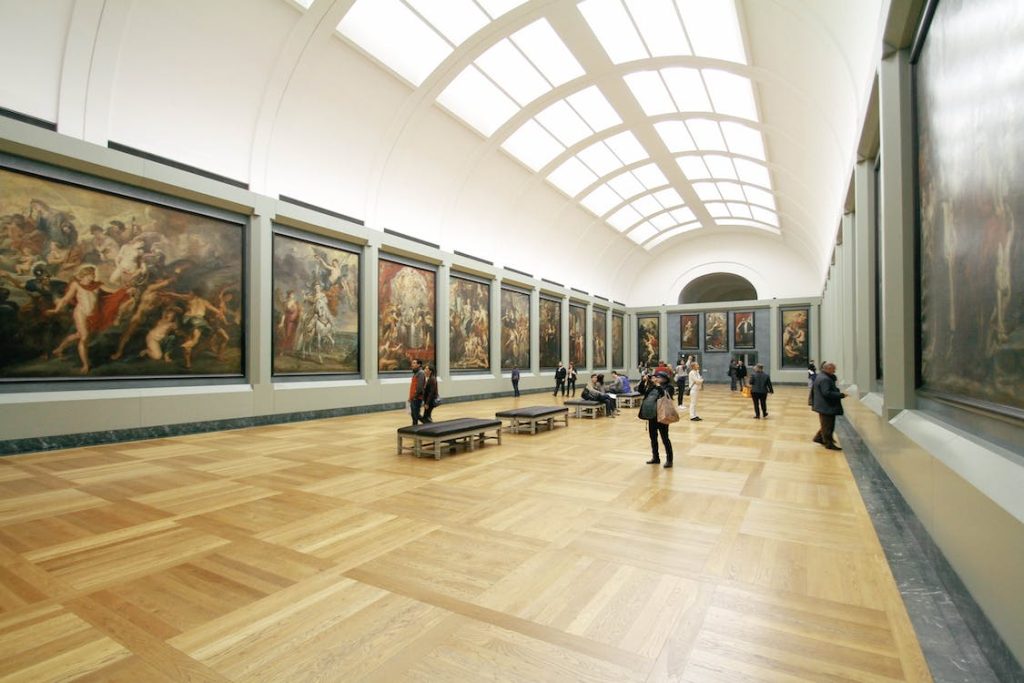
Emerging and Re-Emerging Art Elements and Techniques
Art Trends 2023 #1: Textured Art
Artists in 2023 are embracing the use of texture to add depth and dimension to their creations. Creating a textured artwork involves using different materials and techniques to create a tactile experience.
From thick brushstrokes to layered collages, these textured artworks invite viewers to explore the surface and appreciate the intricate details. Textured works add a new level of sensory engagement to the art world and allows collectors to appreciate art in a more intimate and interactive way.
Art Trends 2023 #2: Calming Pastels
In contrast to the bold and vibrant colors of previous years, 2023 brings a shift towards calming pastel tones. Soft hues like blush pink, baby blue, and mint green dominate artworks, creating a sense of tranquility and serenity.
This trend resonates with collectors who seek a more peaceful and harmonious aesthetic in their art collections. Pastel-colored artworks can bring a sense of calmness and rejuvenation to any space, making them a popular choice for both new and seasoned collectors.
Art Trends 2023 #3: Minimalist Color Palette
Simplicity and minimalism continue to be influential in the art world in 2023. Artists are embracing a restricted color palette, often opting for monochromatic or limited color schemes. This minimalist approach allows the focus to shift towards the form, composition, and emotions conveyed by the artwork. Collectors who appreciate clean lines and a sense of understated elegance will find solace in the minimalist art trend of 2023.
Art Trends 2023 #4: Large-Scale Art
2023 is the year of grandeur and larger-than-life art installations. Large-scale artworks captivate viewers with their sheer size and create a powerful visual impact. From massive murals adorning city walls to towering sculptures in public spaces, these artworks demand attention and spark conversations. Collectors with ample space and a love for statement pieces will be drawn to the grandeur offered by large-scale art.
Art Trends 2023 #5: Organic Art
Nature-inspired art is experiencing a resurgence in 2023. Artists are drawing inspiration from the natural world, incorporating organic shapes, patterns, and materials into their creations. From paintings that depict serene landscapes to sculptures made from reclaimed wood, organic art bridges the gap between humanity and nature. This trend appeals to collectors seeking a connection to the environment and a sense of harmony within their art collections.

Art Trends 2023 #6: Street Art
Street art has evolved from an underground movement to a respected art form, and its popularity continues to rise in 2023. Artists are transforming public spaces and urban areas with their vibrant and thought-provoking creations. Street art offers a unique blend of visual aesthetics, social commentary, and accessibility. It allows collectors to own a piece of urban culture and brings art out of the confines of traditional galleries.
Art Trends 2023 #7: Gestural Art
Gestural art, characterized by spontaneous and expressive brushstrokes, is making its mark in 2023. Artists are embracing the freedom and raw emotion that comes with gestural painting. These artworks often capture the energy and movement of the artist’s hand, creating a sense of immediacy and dynamism. Collectors who appreciate the emotional intensity and the raw energy of art will be drawn to gestural art in 2023.
Art Trends 2023 #8: Body Art
The human body has long been a subject of artistic exploration, and in 2023, body art takes on new dimensions. Artists are pushing the boundaries of traditional mediums and using the human body as a canvas for their creations.
From intricate body paintings to performance art, body art challenges societal norms and invites viewers to question their perception of the human form. Collectors who appreciate art that blurs the line between the physical and the conceptual will find intrigue in body art.
Art Trends 2023 #9: Sculpture
Sculpture has stood the test of time as a revered form of artistic expression, and in 2023, it continues to captivate art enthusiasts. Artists are exploring new materials, techniques, and concepts to create sculptures that push the boundaries of imagination.
From traditional bronze sculptures to avant-garde installations, sculpture offers a three-dimensional experience that engages both the visual and tactile senses. Collectors who appreciate the enduring beauty and craftsmanship of sculptures will find a wealth of inspiration in this art form.
Art Trends 2023 #10: Ceramic Art
Ceramics, often regarded as a traditional art form, is experiencing a modern revival in 2023. Artists are reinventing ceramics by experimenting with unconventional shapes, glazes, and firing techniques. From delicate porcelain vessels to bold and sculptural ceramic installations, this art form showcases the versatility and artistic potential of clay. Collectors who appreciate the fusion of tradition and innovation will be drawn to the captivating world of ceramic art.
New Forms of Art Following New Technologies
Digital Art
The rise of technology has expanded the horizons of artists and provided them with new possibilities in expressing themselves and creating their art. In 2023, artists are using digital tools to create captivating and immersive artworks.

Digital art is a type of virtual art form that encompasses a wide range of mediums, including digital paintings, animations, and interactive installations. This trend allows artists to explore limitless possibilities and offers collectors a chance to own unique and ever-evolving pieces.
Digital art bridges the gap between art and technology, appealing to both traditional art lovers and tech-savvy collectors.
NFT
Non-fungible tokens, or NFTs, have taken the art market by storm in 2023. NFTs are digital assets that use blockchain technology to establish ownership and provenance of digital artworks. This groundbreaking development has revolutionized the way art is bought, sold, and collected.
NFTs offer artists a new avenue for monetizing their digital creations and give collectors the opportunity to own exclusive and authenticated digital artworks. The world of NFTs is still evolving, and it presents an exciting opportunity for both artists and collectors to explore the intersection of technology and art.
AI-Generated Art
Artificial intelligence (AI) is making its mark in the art world, with artists collaborating with algorithms to create mesmerizing artworks. In 2023, AI-generated art blurs the line between human creativity and technological innovation.
Artists are using AI algorithms to generate unique compositions, explore new aesthetic possibilities, and challenge traditional notions of authorship. This trend offers collectors a glimpse into the future of art and raises intriguing questions about the role of technology in the creative process.
Final Words
From tangible art to digital masterpieces, the art landscape of 2023 offers something for every art lover. Whether you are a seasoned collector or a budding enthusiast, exploring these art trends will undoubtedly expand your artistic horizons.
As you immerse yourself in the captivating world of art trends, Brittany Corporation provides you with the perfect canvas to create your own masterpiece of a lifestyle. With our exquisite luxury properties, designed to evoke elegance and sophistication, you can surround yourself with beauty both inside and outside your home.
Discover the seamless blend of art, architecture, and comfort by learning more about us and exploring the exclusive properties offered by Brittany Corporation today. Your dream lifestyle awaits!
Suggested Read: Imagine These Luxury Home Sculpture Lighting
Suggested Read: 5 Most Valuable Collector Items for Your Home
Suggested Read: The Most Iconic Sculpture To Have At Home
Suggested Read: Why You Should Start Trading Stocks Today
Suggested Read: 5 Best NFT of 2022
Are you considering the cozy warmth of a wood stove for your home but wondering about the installation costs? In this comprehensive guide, we’ll delve into the factors that affect wood stove installation costs and help you decide whether a wood stove or a pellet stove is right for you. Plus, we’ll explore different stove materials, wood stove safety tips, and how to save money on installation costs.
Wood Stove Installation Cost
How much does it cost to install a wood stove?
An average wood stove will typically cost around Php 170,000, though prices can range from Php 110,000 to Php 210,000. High-end projects may even surpass Php 280,000. The final cost depends on factors such as the stove’s type and size, the cost of ventilation parts, and local labor rates.
The Benefits of Wood Stoves
Wood stoves offer unmatched comfort and energy efficiency when it comes to heating your home. These versatile appliances can complement various interior styles, from rustic cabins to modern living rooms. However, it’s essential to hire a professional for installation to ensure compliance with local regulations and safety standards.
How much does a new wood stove cost?
Wood stove prices depend on the variety of sizes and fuel types. Prices can range from Php 28,000 to Php 170,000, depending on factors like BTU rating and heating capacity. For instance, a 60,000 BTU stove can heat a 2,000-square-foot home, while a 42,000 BTU stove is ideal for a 1,300-square-foot space.
Wood Stoves vs. Pellet Stoves
There are two types of wood-burning stoves: Wood stoves and pellet stoves. But which is better, a wood or pellet stove?
Wood stoves are the traditional stoves that use wood logs, whereas pellet stoves burn recycled wood pellets. These stoves are more efficient and environmentally friendly than wood-burning stoves.
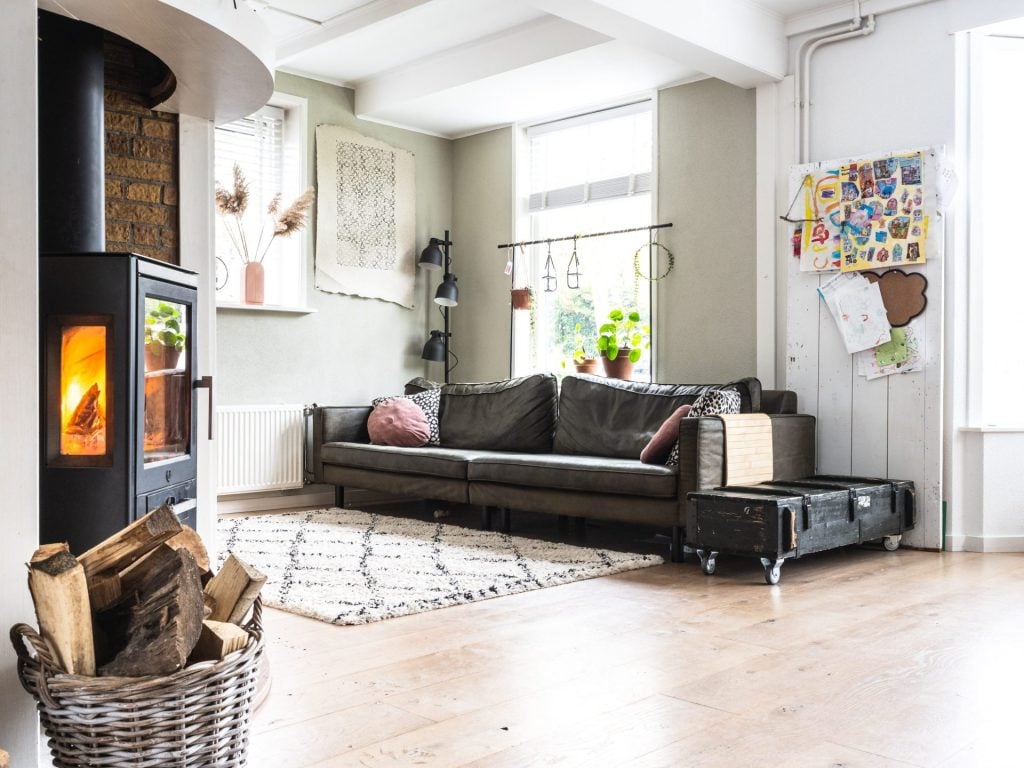
Installation costs and maintenance requirements vary, making it crucial to weigh the pros and cons of each type before making your decision. Wood-burning stove installation costs are higher if you need to install a new ventilation system.
On the other hand, wood pellet stoves need more regular maintenance because you need to clean them every week. But they can rely on a direct vent system that recycles dirty air and doesn’t need to be hooked up to a chimney. With this, you don’t need to hire someone to inspect your chimney yearly and it can save you more money.
How much do Stove Materials Cost?
Wood stoves can be made of cast iron, steel, or stone. Steel is the most budget-friendly option, while cast iron and stone provide customizable decorative options. The choice of material can significantly impact the stove’s appearance and cost.
Cast iron and stone stoves can be decorated and customized to the color or shade you prefer. Cast iron wood stoves are best if you’re opting for a classic look because you have options for scrolled edges and detailing.
Catalytic vs. Non-Catalytic Wood Stoves
Laws today provide for emission limits, that’s why a wood-burning stove must be compliant with these guidelines. There are two different combustion styles that will reduce carbon emissions for wood stoves: Catalytic and Non-Catalytic Wood Stoves.
Non-catalytic wood stoves are less expensive than catalytic stoves. These two kinds of stoves perform differently, and both have their own advantages and disadvantages. Consider your priorities when choosing between the two.
Catalytic Stoves
Catalytic stoves recycle smoke and particles for cleaner and more controlled combustion, but they require more maintenance and come at a higher cost. This wood stove recycles smoke and particles in a chamber to be burned again. It maintains the fuel burning at a lower and even temperature, which reduces carbon monoxide emissions.
Most high-end wood stoves have a wood stove catalytic converter, and this type of wood-burning stove is suitable for people who are into technology and are willing to maintain it over time.
The con of catalytic stoves is that they need to be cleaned regularly since the chamber gets buildup over time. This makes it more costly than non-catalytic stoves.
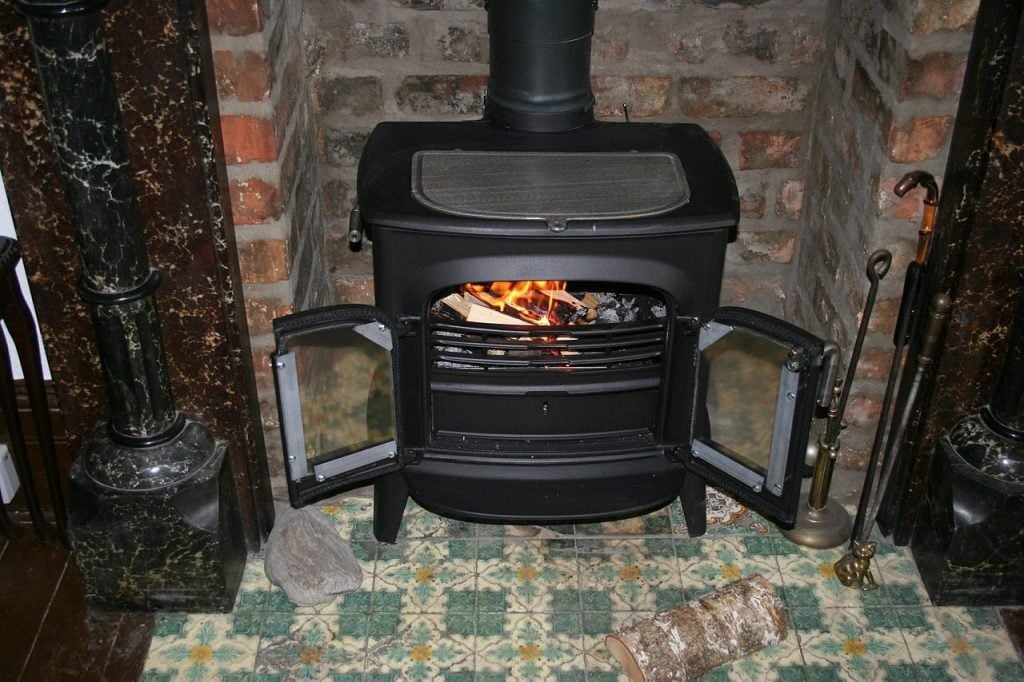
Non-Catalytic stoves
A non-catalytic stove produces a more robust fire but emits more emissions. Unlike catalytic stoves, non-catalytic stoves don’t work on recycled smoke. However, the process of fuel burning is more controlled and less even. This type of stove is also low-maintenance and easier to operate, but it produces more carbon emissions.
Labor Costs for Installation
Labor costs for wood stove installation can vary widely, primarily depending on the complexity of the ventilation system setup. Discuss rates with your contractor in advance to avoid surprises. In general, installation costs range from Php 28,000 to Php 150,000, but existing ventilation can reduce expenses.
Freestanding Stoves vs. Fireplace Inserts
Decide between freestanding wood stoves and fireplace inserts. If you install a wood stove as a freestanding unit, you can install it anywhere, such as near a large fireplace or the center of your living room. You can get a wood stove or fireplace insert so you can only see the front door of the unit.
Wood-burning fireplace inserts are enclosed within an existing fireplace and are more cost-effective to install. A fireplace installation is less expensive because you only use the existing ventilation and setup of a fireplace. But you may also need to install a chimney liner to prevent soot buildup. Inserts do not provide as much warmth compared to freestanding wood stoves.
If you have decided to get a freestanding stove, prepare additional payment for installing a new venting system if you don’t have one in your home. A stovepipe is connected to an existing chimney or chimney pipe where the smoke exits your home. Installation of a stainless steel chimney liner may cost around Php 45,000 to Php 85,000 depending on the condition of your home and other necessary labor that needs to be done.
But whatever type you’ll use for your home, consider the ventilation, chimney installation, hearth pad, and wall covering requirements for both options.
Gas Fireplace Conversion
If your home has a gas fireplace and includes a chimney flue, you can convert your gas stove fireplace into a wood-burning stove. Converting gas fireplace may cost around Php 5,600 to Php 17,000. Masonry wall protection, chimney construction or replacement, and repairs to the fireplace.
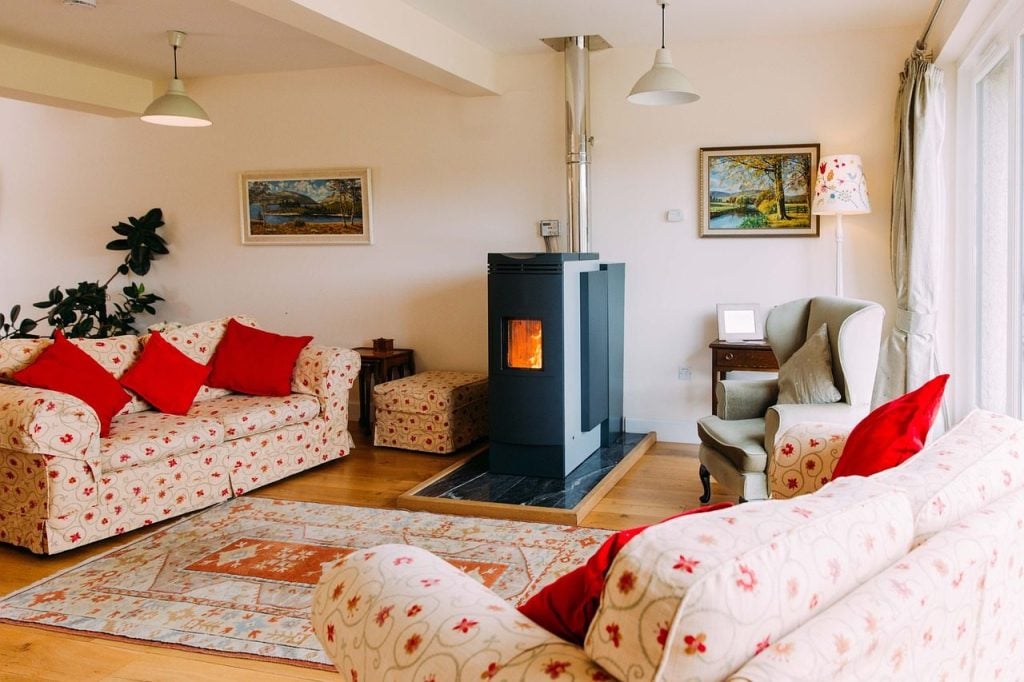
Wood Stove Safety Tips
Here are some wood safety tips you need to keep in mind:
- Use only dry, well-seasoned wood in burning your wood stove.
- Dispose of ashes in a metal container outside your home, not inside.
- Never connect the wood stove’s vent to a fireplace chimney unless it has already been converted to be used solely for a wood stove.
- Only burn wood in the wood stove.
- Have the wood and wood-burning appliances inspected by a professional yearly.
- Install carbon monoxide detectors in the same room to alert you when carbon emission levels are beyond safe limits.
- Hire trained technicians or professionals who know how to install wood stove accessories to prevent the risk of house fire, carbon monoxide poisoning, or other damage.
How to Save Money on Wood Stove Installation Costs?
Installing a wood stove is an investment for your home. But you can also save money on utility bills while keeping warm and cozy. Here’s what you can do to save money on installation costs:
- Take your time choosing the right wood-burning stove. Check various models, wood stove ranges, prices, and special promotions or sales.
- You may also want to consider off-peak installations. Some contractors offer discounted rates during off-peak season because they are less busy during this time.
- Some utility companies offer incentives to promote energy-efficient heating systems. Take advantage of these incentives or rebates as these can help offset installation costs.
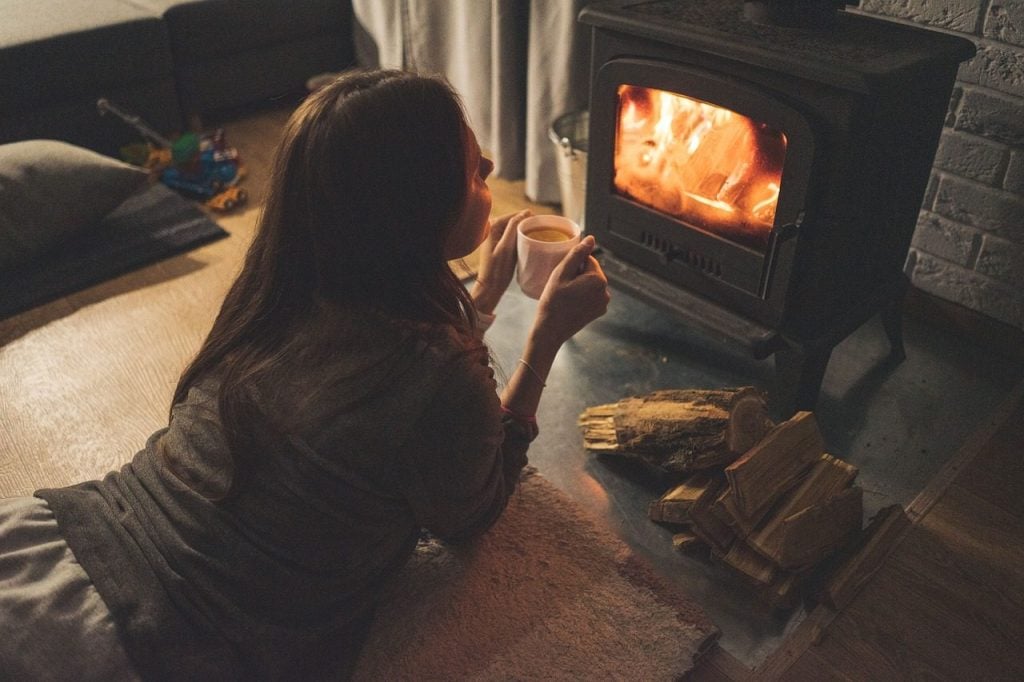
Making Your Luxury Home Cozy with Brittany Corporation
Experience the epitome of luxury living with Brittany Corporation. As a leading luxury real estate company, we offer exquisite properties that blend elegance, comfort, and sophistication. Our commitment to quality craftsmanship and innovative design ensures you find your dream home. Discover a world of opulence and exclusivity with Brittany Corporation.
Contact us today to explore our exceptional real estate offerings and embark on a journey toward your next extraordinary residence. You may also visit our website, YouTube, and LinkedIn for more details.
Suggested Read: Liven Up Your Home: A Living Room With Fire Place Interior Design
Suggested Read: Benefits of Wood-Burning Stove For Luxury Home
Suggested Read: Pros & Cons of Wood, Gas, And Electric Fireplaces
Suggested Read: Bathtub Installation Cost in the Philippines 2023
Suggested Read: Virtual Fireplaces To Keep You Warm
You may see heat pumps in most houses for heating and cooling options. But in the Philippines’ tropical climate, heat pumps are commonly used for the homeowner’s air conditioner. If you consider installing a heat pump, you may need to check the average heat pump costs and the heat pump’s efficiency.
Read more to find out about heat pump installation cost and other tips and tricks.
Cost to Install a Heat Pump
How much does Heat Pump Installation Cost?
The average heat pump installation costs around Php 249,799. However, the typical heat pump cost is between Php 200,000 and Php 290,000, and some even cost 375,000 for high-end projects. Take note that the total cost of replacing or installing a heat pump depends on the heat pump system you choose, how complex the installation is, and the labor costs in your area.
What is a heat pump and how does it work?
Air source heat pumps, or mini splits, are the most common and affordable heat pump technology next to geothermal heat pumps. A heat pump is an effective heating and cooling solution for any home or building.
Heat pumps work through outdoor air as either a heat source in winter or a heat sink in summer. The heat pump system provides both heating and cooling solutions and they reduce utility bills by around 20% to 40%.
Heat pumps are best suited for homes with mild climates that don’t require extra heating in the winter. If you live in a place with a cold climate, you may need to install additional heating elements aside from your heat pump.
There are different heating and cooling mechanisms you also need to know:
Cooling System
The cooling system works when the refrigerant carries gas and hot air outside. Then, it is pumped through a coil and condenses into liquid. The warm air will evaporate outside, and the liquid refrigerant pumps back inside your home and pulls out more heat.
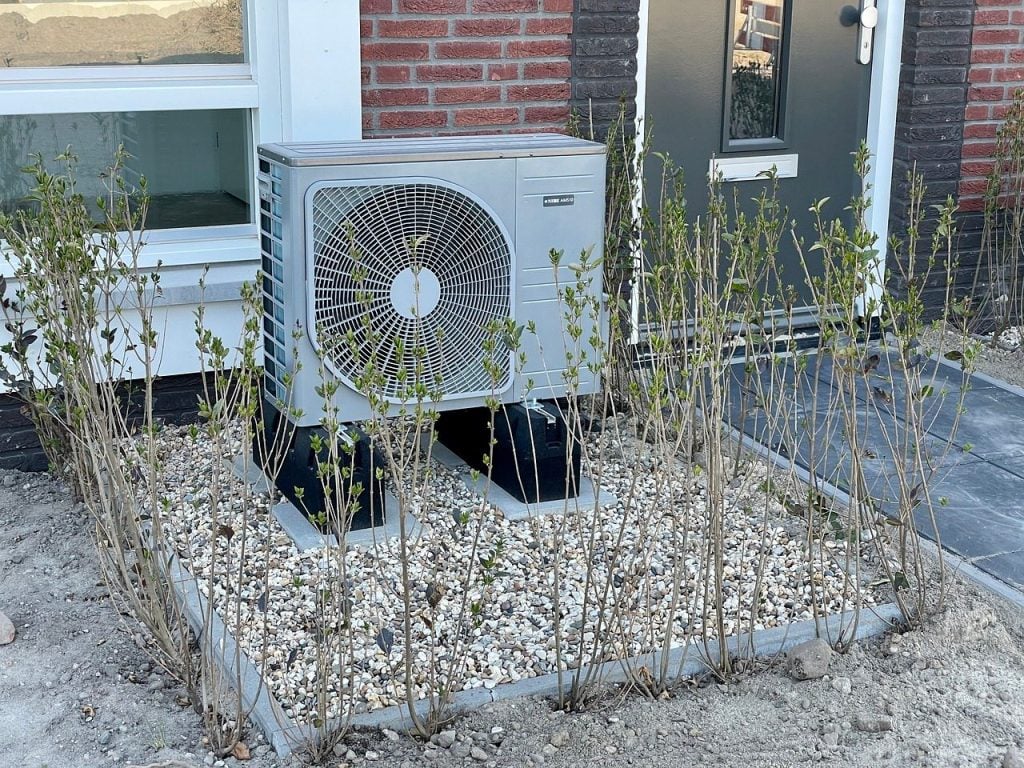
Heating System
The heating system works in reverse of the cooling system to heat your home. the outdoor unit pulls warm air in and it is then pumped into your home. The refrigerant is still able to pull in warm air during the winter because it is colder than the cold air outside, and the heat travels from warmer to cooler objects.
Heat Pump Size
Heat pumps are around one to five tons in size. The size heat pump depends on the size of your home and the temperature in your region. A high-efficiency system is the typical size for your home to provide heating and cooling evenly.
If you have a professional contractor who installs your heat pump, they should advise you on which size heat pump to buy. But generally in a mid-size home around 2,000 square feet needs three to four tons of heat pump.
How Much Do Heat Pump Costs Before Installation?
Heat pumps cost from around Php 160,000 to Php 245,000, but it may still cost more or less depending on the product. Factors in the price of a new heat pump are the price, size, brand name, and energy-efficiency rating.
Energy-Efficiency and Sound Ratings
The greater the energy efficiency of a heat pump, the higher its price is likely to be. However, the increased upfront cost may prove to be a worthwhile investment due to the subsequent savings on energy bills. When you’re in the process of comparing different heat pump brands, keep an eye on the SEER (Seasonal Energy Efficiency Ratio) and HSPF (Heating Seasonal Performance Factor) ratings.
A heat pump with higher values for these ratings indicates greater efficiency. You should aim for a minimum SEER rating of around 14, while HSPF ratings typically start at 8 and go higher. Additionally, consider the decibel sound rating and opt for a system with a lower number to ensure it operates quietly. Most heat pumps fall within the range of 40 to 60 decibels in terms of noise level.
What are the Different Types of Heat Pumps?
There are different heat pump types that you can install in your homes. Here are the differences between the various heat pump systems:
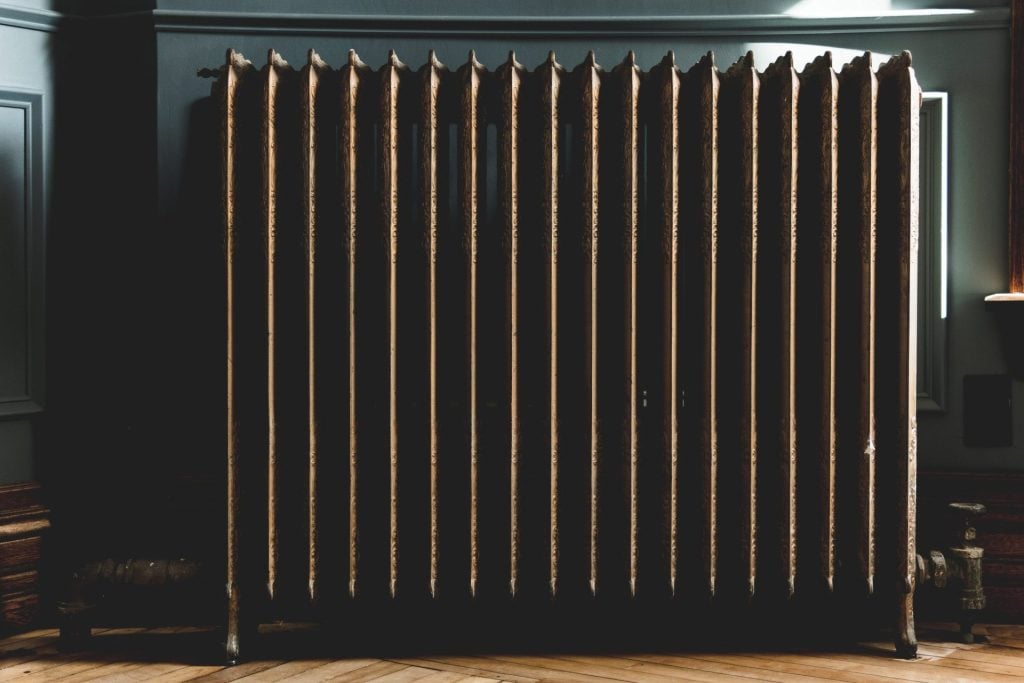
Air-Source Heat Pump
Air-source heat pumps are the most common type of heat pumps because they are cheaper, especially when homeowners have existing ductwork installed. They transfer heat from outside air to warm inside your home, and they have an outdoor unit sitting above the ground.
While air-source heat pumps are less expensive, they are not as efficient as other heat pumps because they require more maintenance over time.
Geothermal Heat Pump
Ground Source heat pumps, also known as geothermal heat pumps, is another heat pump type that pulls out heat from the ground or a nearby water source through a system of buried pipes. They use the stable temperature deep in the ground to cool or heat your home. Geothermal heat pump is expensive to install, but it is an efficient heat pump because of the constant temperature they have access to. This also means you can save money on your electricity bills!
Solar Heat Pump
Solar heat pumps are highly efficient as they are powered by solar power. However, homeowners need to install solar panels first before having a heat pump installed.
Hybrid Heat Pump
Hybrid heat pumps are usually installed in regions where regular heat pump isn’t enough to heat or cool a home. A hybrid heat pump is combined with a gas or electric furnace that kicks in when the temperature drops lower than usual for the heat pump to operate. The furnace only runs when it’s really cold outside, making your electric or gas bills more manageable.
Ductless Mini-Split Heat Pump
Another type of heat pump is the ductless mini-split heat pump or simply called ductless heat pumps. Ductless heat pumps are suitable for homes without ductwork during the summer and winter seasons. They are small indoor units in designated zones to outdoor units. This type of heat pump unit is also recommended for homes with fewer conditioning zones and smaller square footage.
Gas-Fired Heat Pump
Gas-Fired Heat Pumps support multiple areas in your home simultaneously. However, they are less efficient than other heat pump units and have higher energy costs. This type of heat pump is best for larger homes.
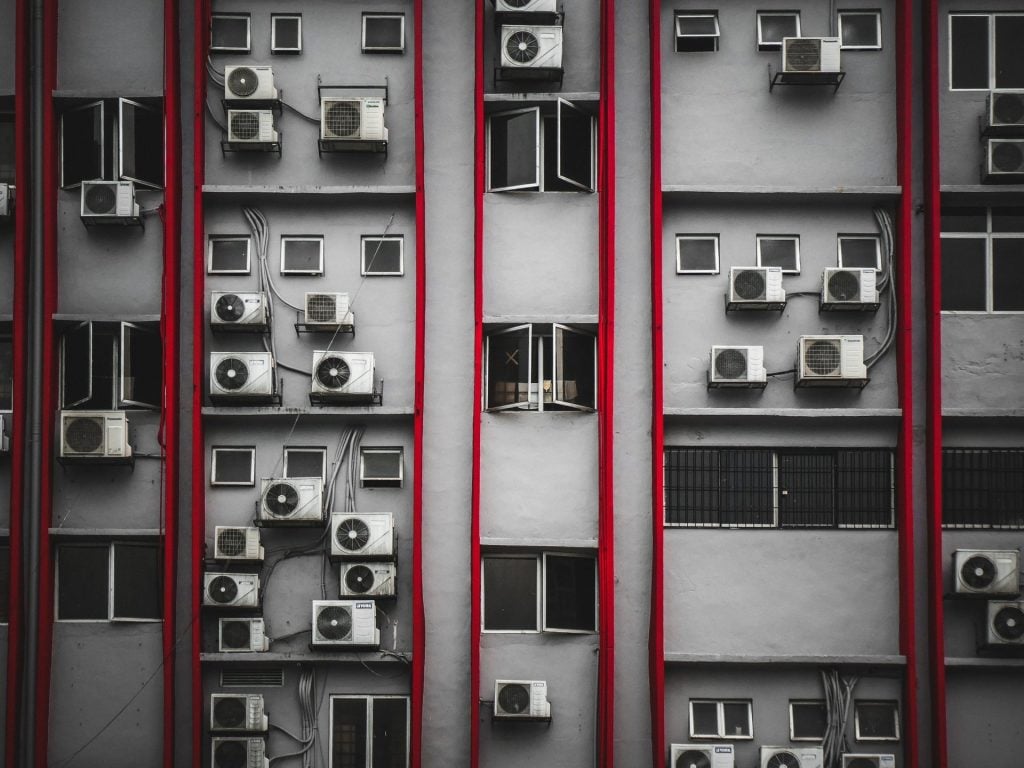
How Much Are Labor Costs to Install A Heat Pump?
The labor costs for heat pump installation cost around Php 3,700 per hour, so be prepared to pay installation costs aside from the heat pump price itself. If you install a geothermal system, the heat pump installation cost may be more expensive.
If you have an existing ductwork from another HVAC system, this can be used with a new heat pump and it won’t be as expensive. However, if you need a new duct system, expect labor costs to increase. To lessen the costs, you can opt to install a ductless heat pump instead.
DIY Heat Pump Installation vs. Hiring a Professional
Installing a heat pump takes a lot of work, such as land excavation, electric work, or solar panel installation. That’s why it is recommended to hire an HVAC professional rather than doing a DIY Heat Pump Installation.
It’s always best to consult an HVAC professional or licensed technician to handle the work. In fact, you may avail warranties for new heat pumps and installation for these may require professional installation by an HVAC contractor. Discuss rates with the experts so you have an idea of how much you need to spend.
Your Path to Comfort and Efficiency: Explore with Brittany Corporation
If you’re ready to elevate your home and immerse yourself in the ultimate blend of sophistication and comfort, trust the expertise of Brittany Corporation. Explore our luxury house and lot properties for sale in exquisite locations such as Alabang, Tagaytay, Sta. Rosa, and Baguio. Discover a life of opulence and world-class luxury living in your new Brittany home.
Visit our YouTube and LinkedIn for more details. You may also contact us to learn more about our luxury properties.
Suggested Read: Sustainability in Glass Houses: Reducing Energy Costs in the Summer
Suggested Read: Smart Home and Glass House: What It Brings To The Table
Suggested Read: A Guide to Keeping Your Swimming Pool Safe & Clean
Suggested Read: A Guide to Water Features for Luxury Homes
Suggested Read: Septic Tank Pumping Cost
Most people use forced hot air furnaces to heat their homes if they don’t have a heat pump. Furnaces are useful in cold climates as they blow hot or warm air through the ducts and vents of your house. But if your furnace gets damaged, you may find a hard time to determine if you need to replace or repair it.
The cost of furnace installation can vary widely depending on various factors, including the type of furnace, its size, and its energy efficiency. This guide will break down the furnace installation costs and repair costs, explore different furnace types, and delve into factors that affect the price.
Furnace Installation Cost in the Philippines
In the Philippines, the average furnace cost, assuming existing ductwork is in place, is around PHP 81,200. However, this cost can vary depending on several factors, including the type of furnace, its size, and the complexity of the installation. A high-end furnace installation project can cost upwards of PHP 114,800.
It’s essential to keep in mind that labor costs can fluctuate based on your location, so it’s advisable to request quotes from multiple furnace installation companies to get accurate estimates tailored to your needs.
The Importance of a Furnace
Having a reliable central heating system, such as heat pumps, in your home is invaluable, especially during cold seasons. While the initial investment in a new furnace may seem substantial, it can provide comfort and warmth for several years. Whether you’re looking to replace an aging HVAC system or building a new home, investing in a new furnace can enhance your quality of life.
Ductwork Considerations
For homes already equipped with a central heating system, such as a furnace, there’s no need to make significant changes to the existing ductwork when installing a new furnace. However, in the case of new construction or homes with ductless heating systems, you may need to budget extra for installing new ductwork.
Installing a new furnace requires technical expertise, so consulting with multiple HVAC professionals is a wise step to ensure the safety and efficiency of your heating system in the long run.
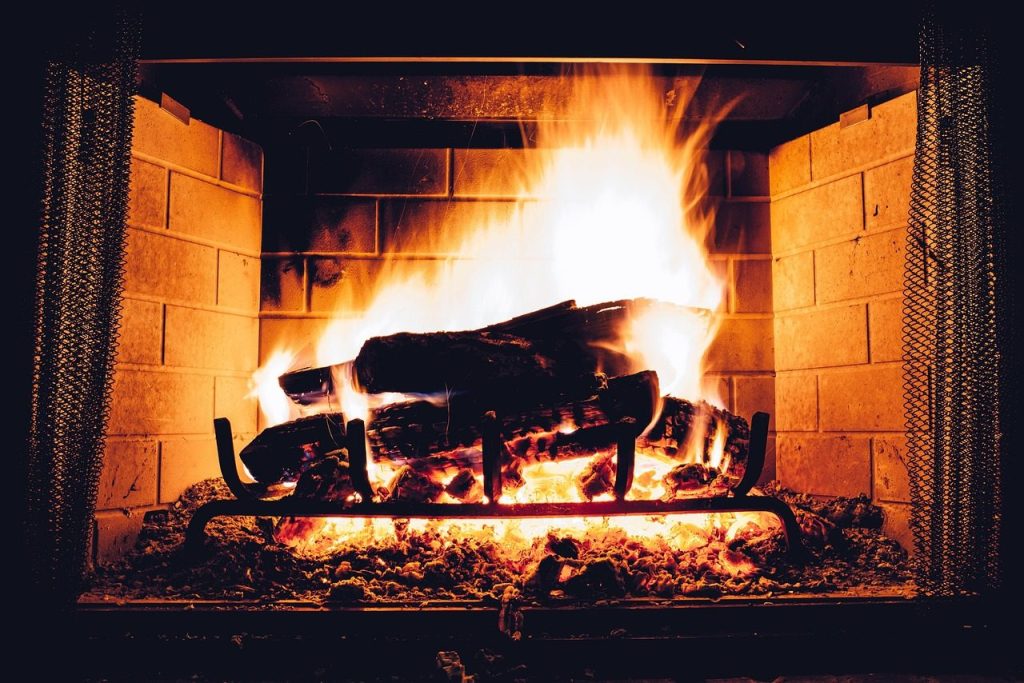
Different Types of Furnaces and Their Costs
The average cost of installing a new furnace will depend on your chosen fuel source. An electric furnace is more affordable than other furnaces, followed by gas and oil furnaces.
Each of these types of furnaces, aside from various functionality and benefits, has different price ranges as well. Such factors that may affect the price include the brand name and how advanced or high-tech the furnace is.
Electric Furnace
Electric furnaces are an affordable option with a more environmentally friendly fuel source. In the Philippines, a new electric furnace can cost between PHP 58,800 to PHP 106,400, including installation. The price varies based on the furnace’s BTU (British thermal units).
Electric furnaces don’t require gas lines and take up less space than oil- or gas-powered furnaces. They are also safer since they don’t involve fuel combustion. Electric furnaces have a longer lifespan, lasting up to 15 years, although larger homes may experience slightly higher energy bills due to their increased energy consumption.
Natural Gas Furnace
Natural gas furnaces are a popular choice for their quick and efficient heating capabilities, coupled with relatively lower costs. In the Philippines, a new gas-forced air furnace ranges from PHP 58,800 to PHP 115,600, including installation, depending on the furnace’s BTU and AFUE (Annual Fuel Utilization Efficiency). While the upfront cost may be higher compared to electric furnaces, gas furnaces tend to result in lower utility bills over time. They are especially suitable for regions with cold winters. However, keep in mind that gas furnaces may require more extensive ductwork if you’re switching from an electric furnace.
Oil Furnace
Oil furnaces, although less common, are an option for homes where oil is readily available. In the Philippines, a new oil-forced air furnace can cost between PHP 84,000 and PHP 115,600, including installation, depending on the BTU and AFUE. Unlike gas, oil can be purchased in bulk and stored in a tank, reducing monthly utility costs. However, higher oil prices in most parts of the country make this energy source less popular than natural gas or electricity.

The Impact of Furnace Size on Price
Selecting the right furnace size is crucial because larger and more powerful furnaces tend to be more expensive. Furnace size is measured in BTU (British thermal units), and the appropriate BTU for your home depends on its square footage. As a general guideline, you’ll need approximately 40 to 50 BTU per square foot. For a 2,500-square-foot house, a furnace with 100,000 to 125,000 BTU should suffice. However, your region’s climate may influence this requirement, so areas with heavy winter snowfall may need more powerful furnaces.
Furnace Efficiency and Its Cost Implications
Furnaces are also rated for energy efficiency using the Annual Fuel Utilization Efficiency (AFUE) rating, expressed as a percentage. Higher AFUE ratings indicate greater energy efficiency. High-efficiency furnaces typically have an AFUE rating of around 90 to 95 percent, while average furnaces usually operate at around 80 to 85 percent efficiency.
More efficient furnaces are not only environmentally friendly but also help lower long-term energy bills. Although they may have higher upfront costs, many energy-efficient furnaces come with government incentives and rebates, making them a cost-effective choice in the long run.
Labor Costs for Furnace Installation
Labor costs are a significant component of furnace installation costs. In the Philippines, contractors charge an average of PHP 3,640 per hour for furnace installation, and you’ll likely need a team of professionals to complete the job, which can take eight hours or more. The complexity of the installation, such as the need for new ductwork, can increase labor costs.
For instance, installing new ductwork in your home can be an added expense. Additionally, if you’re replacing an old furnace and require removal, expect to pay an extra PHP 14,000 on average.
Replacing a Furnace Unit
If you plan to replace an existing furnace, the furnace replacement cost is lesser as some components like ductwork are already installed. But if you need to replace your electric baseboard heat with a furnace, the new furnace cost will be more expensive as HVAC contractors need to install ductwork, gas lines, etc. The most economical way to replace the heating system of your furnace is by replacing it with the same type of system.
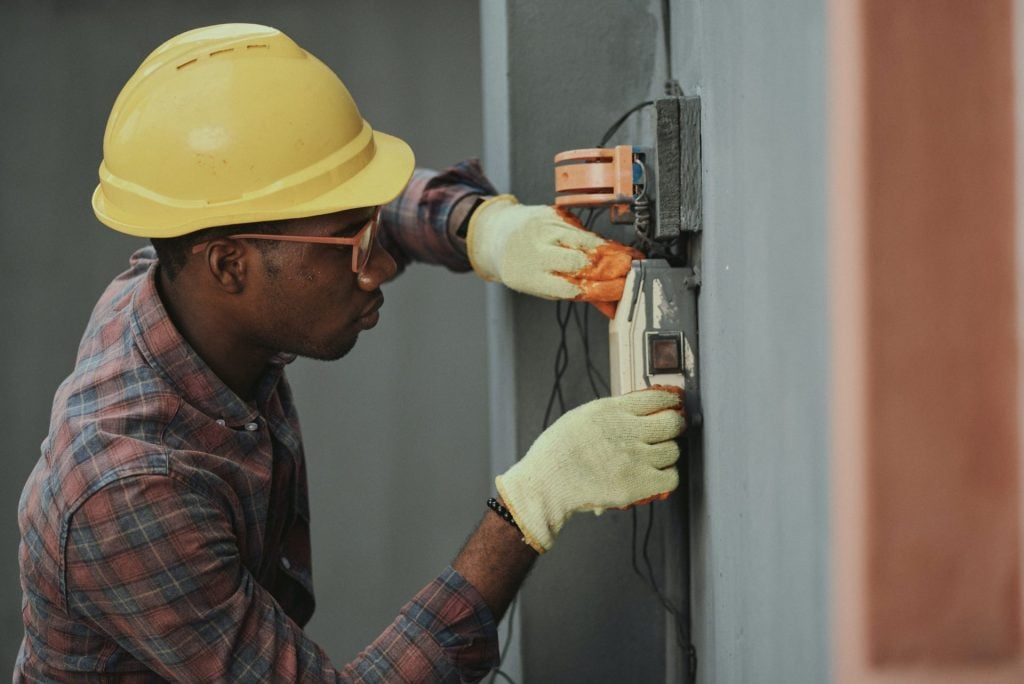
Warranty Considerations
When purchasing a new furnace, be sure to inquire about the manufacturer’s warranty. This warranty ensures that you won’t be responsible for repairs within a specified period after installation. Additionally, many HVAC contracting companies offer the option to purchase an extended warranty, providing coverage for several years of potential repairs.
Final Thoughts
Investing in a new furnace is a significant decision for homeowners in the Philippines, given its impact on comfort and energy efficiency. The cost of furnace installation varies depending on factors such as furnace type, size, and energy efficiency. Always make sure that the furnace you choose will be suitable for your home so you can live comfortably.
When determining your furnace installation budget, don’t overlook labor costs, which can significantly affect the overall expense. Hiring a professional team is essential to ensure the safety and efficiency of your heating system. Additionally, consider the warranty options available to protect your investment and provide peace of mind.
Explore Luxury Living with Brittany Homes
Explore the world of luxury living with Brittany Corporation. Contact us today to discover exceptional real estate opportunities in the Philippines that align with your dreams and aspirations.
Visit our YouTube or LinkedIn to learn more about our Brittany homes. You may also call us to start your journey towards owning a prestigious property.
Suggested Read: Radiant Floor Heating: The Secret to Heated Floors in Luxury Homes
Suggested Read: Pros And Cons of Wood, Gas, And Electric Fireplaces
Suggested Read: Radiant Floor Heating Cost in the Philippines 2023
Suggested Read: Door Installation Cost in the Philippines
Suggested Read: Gas Stations Within Baguio
Building your dream home in the Philippines is an exciting endeavor, but it’s crucial to have a clear understanding of the factors that affect construction costs. From material choices to design preferences, various elements come into play when estimating the cost of building a house.
This guide will help you explore house construction costs in the Philippines, factors influencing these costs, and budgeting strategies to help you embark on your own house construction journey.
House Construction Cost Estimate
Determining the precise house construction cost in the Philippines can be a complex task, as it depends on several variables. However, starting with a general estimate can provide you with a ballpark figure to initiate your planning. Here’s a breakdown of house construction costs based on rough estimates:
Cost per Square Meter
The cost of constructing a house in the Philippines per square foot or meter can vary depending on factors such as location, design, and materials used. As of Q1 2022, the average cost per square meter for residential construction in the Philippines is approximately Php 10,893.16. It’s important to note that you can typically build on 60% to 80% of your lot area, depending on the number of floors and other factors.
Here are some specific estimates for different types of residential construction per square meter based on data from the Philippine Statistics Authority (Q1 2022):
Single House: Php 10,482
Duplex/Quadruplex: Php 8,798
Apartment/Accessories: Php 9,872
Residential Condominium: Php 18,347
Other Residential: Php 9,693
The Construction Cost Handbook Philippines 2020 by Arcadis Philippines Inc. provides a more detailed cost estimate of house building process in the Philippines.
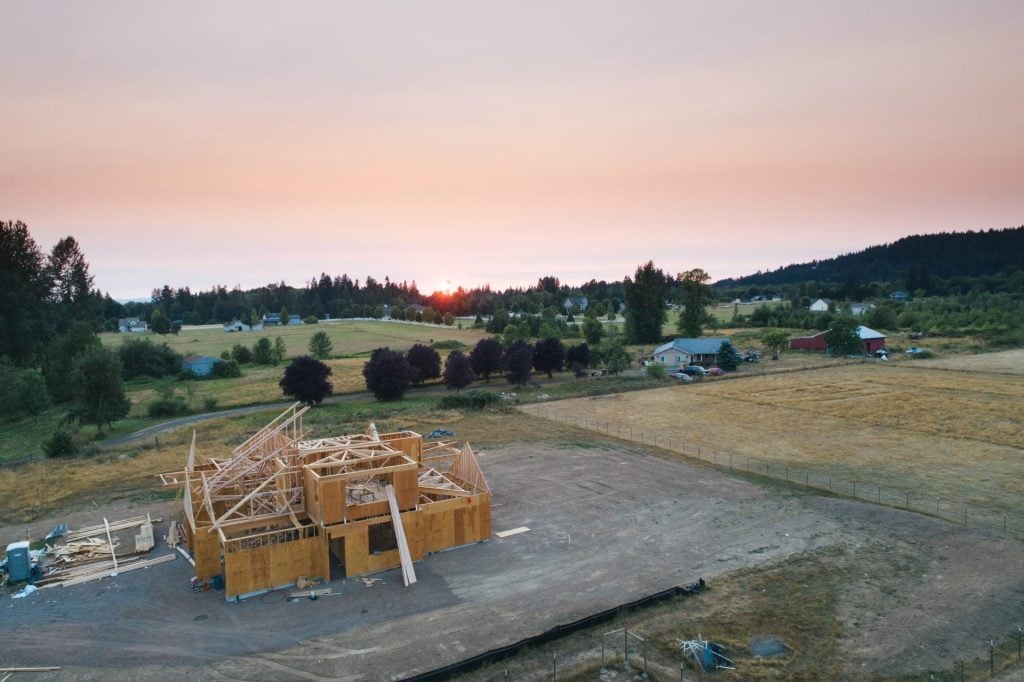
According to this source, terraced houses and average standard homes (one to two bedrooms) may have construction costs ranging from Php 45,201 to Php 53,865 per square meter. High-end detached houses can range from Php 84,348 to Php 142,074 per square meter, including construction materials and services.
House Finish
The finish level you choose for your house significantly impacts construction costs. There are three main types of house finishes:
Rough Finish: Basic essentials, including cement floorings, concrete walls without paint, corrugated roofs, and jalousie windows. Estimated cost: PhP 22,000 to PhP 25,000 per sqm.
Standard/Executive Finish: Enhanced design with ceramic or granite tiles, painted walls, aluminum-framed windows, and cove-style ceilings. Estimated cost: PhP 30,000 to PhP 35,000 per sqm.
High-End Finish: Premium fittings, double-coated granite tiles, accent wall panels, terracotta roof tiles, and customized ceilings with pin lights. Estimated cost: Starting at PhP 42,000 per sqm.
These cost estimates are exclusive of additional features like lighting fixtures, grills, perimeter fences with gates, landscaping, and fees for house design and building permits.
How Much Does It Cost to Build a Simple House in the Philippines?
If you want your own home that will able to accommodate your needs, a simple house can suffice. You will save money on rent, as well as paying for real estate taxes. A simple house has bedrooms, a kitchen, one to two bathrooms, a dining area, a living room, and a garage.
A simple home-building project may cost around Php 25,000 to Php 37,000 per square meter. But if you plan your new house to be a luxury home, like that of Brittany Corporation’s luxury properties, you may need to look into the average costs for the building process. Make sure to have a rough estimate of the construction cost, and set a realistic budget to prevent any financial problems in the long run.
Factors Determining House Construction Costs in the Philippines
Several key factors influence the cost of building a house in the Philippines. To obtain a more accurate estimate, it’s essential to consider these factors when discussing your project with architects and construction engineers:
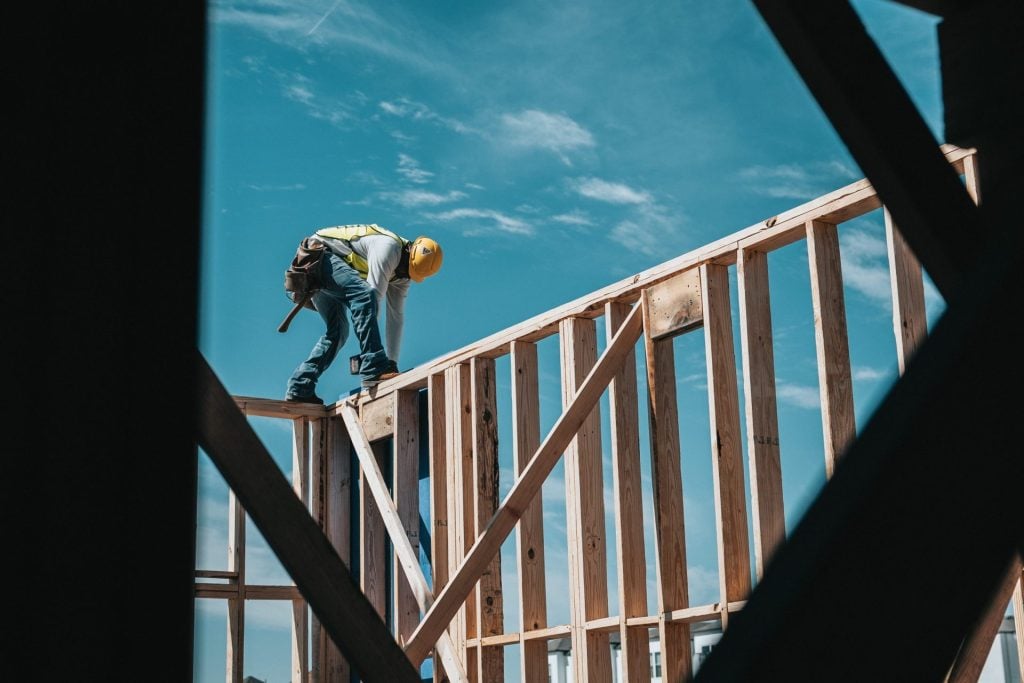
House Design and Specifications
The final cost largely depends on the design and specifications you choose for your home. Consider factors of the house design fees such as the type of finish, number of bedrooms and bathrooms, number of floors, size, and design type. Detailed plans and design preferences play a critical role in determining construction costs.
Labor Costs
Labor costs in the Philippines range from Php500 to Php800 a day, depending on the laborer’s skill level and experience. Labor construction costs in urban areas such as Metro Manila may be higher because of increased demand and a higher cost of living.
Timetable and Manpower
The construction timetable can affect costs significantly. Rushed projects with shorter deadlines require more manpower, increasing labor expenses. Planning your construction timeline carefully can help control costs.
Also, make sure to choose construction services that are reputable in building residential projects. These won’t cause delays as much as possible as they already have
Location and Terrain
The location of your lot and its terrain can impact construction costs. Lots in lower areas or sloping terrains may require additional materials and labor for leveling and foundation work.
Construction Materials
The materials you select for your home, including roofing, walls, flooring, and fixtures, influence the overall cost. High-quality material costs generally come at a higher price point, while more economical options can help control costs.
Permits, Licenses, and Taxes
Building permits, occupancy permits, and other required licenses affect the total construction cost. A building permit cost depends on the location, size, and scope of the project. Building permit fees cost around Php 10,000 to Php 50,000, or even more. Real Property Taxes and Value-Added Tax should also be considered in the total cost of building your dream house.

Working with a Set Budget for House Construction
If you have a house construction budget in mind, it’s essential to communicate this budget with your architect and construction engineer. They can tailor the plan and design to align with your financial constraints while ensuring your needs are met.
Be open to alternative materials and design options to find a balance between your budget and the desired outcome, like square footage or opting for a prefabricated home.
Using a Home Construction Loan
Many individuals opt for home construction loans from banks or government institutions like Pag-IBIG to fund their projects. These institutions typically require complete house plans and bills of materials before granting loans.
Banks often approve loans covering 70% to 90% of the property’s appraised value. It’s crucial to have your architect and construction engineer present when assessors from the bank visit your construction site to determine land value and construction costs.
Ensuring Quality in Your House Build
While controlling costs is essential, it’s equally vital to prioritize the quality of your construction. Cutting corners on quality can lead to higher long-term maintenance and repair expenses. Ensure that your architect and construction engineer are reputable and provide warranties and prompt after-sales service for any structural defects.
Building on a Strict Budget
For those with tight budgets, building a house is still possible. Innovative designs and efficient use of materials can help you create a functional and comfortable home within budget constraints. Consider exploring classic Filipino architectural styles like the Bahay Kubo, which can be built using indigenous materials like bamboo, nipa, rattan, and coconut lumber.
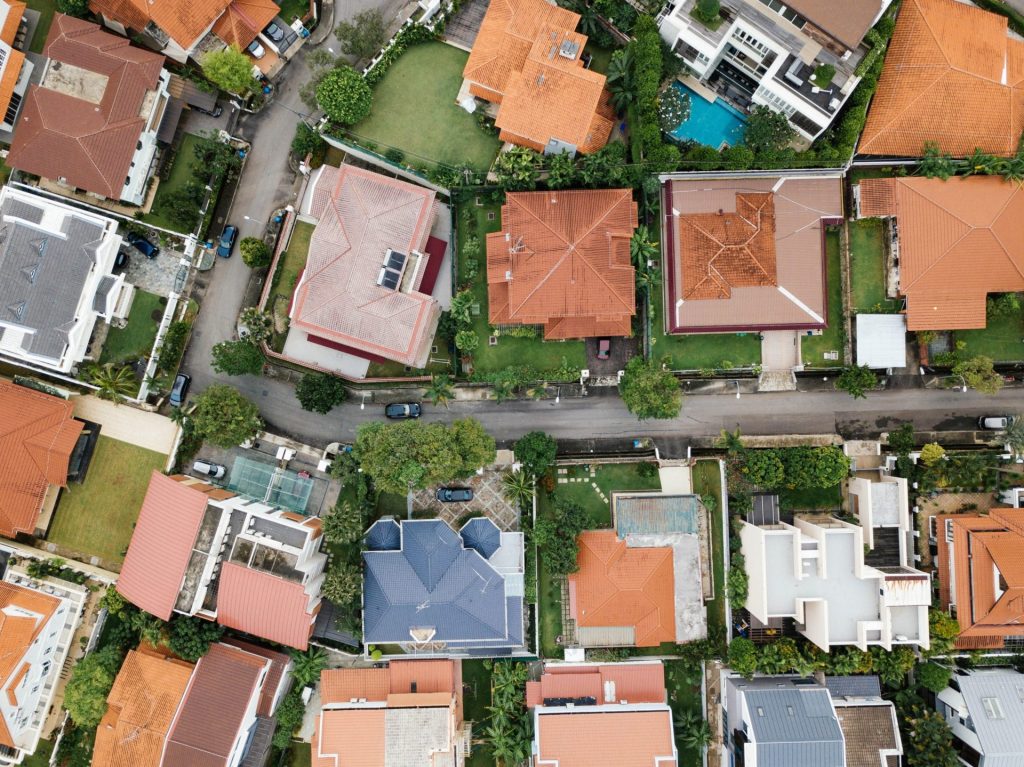
Buying vs. Building
Deciding whether to buy or build a house depends on various factors, including location, size, and budget. Building a house allows for more customization but may involve unexpected expenses. Buying a house typically involves a fixed payment but offers less customization. Your choice should align with your financial situation and long-term goals.
Build Your Dream Home with Brittany Corporation
Brittany Corporation specializes in crafting exquisite residential communities that epitomize sophistication and elegance. Their commitment to quality, attention to detail, and dedication to creating exceptional living spaces have earned them a distinguished reputation in the real estate industry.
Whether you’re dreaming of a modern masterpiece with panoramic views or a timeless architectural gem, Brittany Corporation’s portfolio of luxury developments has something to offer every discerning homeowner.
To learn more about their prestigious properties and embark on a journey to luxury living, visit Brittany Corporation’s official website, YouTube, or LinkedIn, or contact their dedicated team of experts today.
Suggested Read: Average Construction Cost of Luxury Homes in the Philippines
Suggested Read: How Much Will It Cost To Build A House in the Philippines
Suggested Read: A Guide For Your Dream Home Building
Suggested Read: Cost To Paint A Room in the Philippines
Suggested Read: Build Better, Safer With Technology
Buying a holiday home abroad involves a lot of factors to think about. Sure, you need to consider where it is and what kind of property it is, but you also have to pay attention to the local rules and laws. In some places, they might limit what kind of property a foreign buyer can get. Plus, there are risks that come with owning a home abroad, so having the right insurance can help reduce these risks.
In this guide, we’ll try to cover some important topics about costs, research, and mortgages so you can make a more informed decision when choosing a property.
Follow Your Instincts and Budget
One of the dilemmas in buying a holiday home is whether you choose one where you can enjoy the city life or coastal properties so you can be near nature. This choice boils down to your personal preferences and budget. Some want convenience by living near restaurants and shops in the city, while resorts attract guests and families because of the amenities and activities they provide. Property prices may also vary in these two areas — living in a holiday home in the city may be more expensive than those in the province or coastal area.
Dominic Volek of Henley & Partners recommends homebuyers to check the property’s history for any issues or disputes that may affect its value. He also said that home buyers should get a real estate agent who is knowledgeable in the local market. You may also need to consult with a tax specialist or lawyer to help you navigate any tax implications for your property.
Seek Advice from Experts Who Know the Location
If it’s your first time buying a holiday home, it can be an unfamiliar territory to you. Check the latest trends, and talk to real property insiders and friends who have already experienced this property investment. According to Knight Frank Singapore’s head of sales for residential international project marketing Clarice Lau, Singapore continues to be the top choice among ultra-high-net-worth individuals (UHNWI) in Asia.
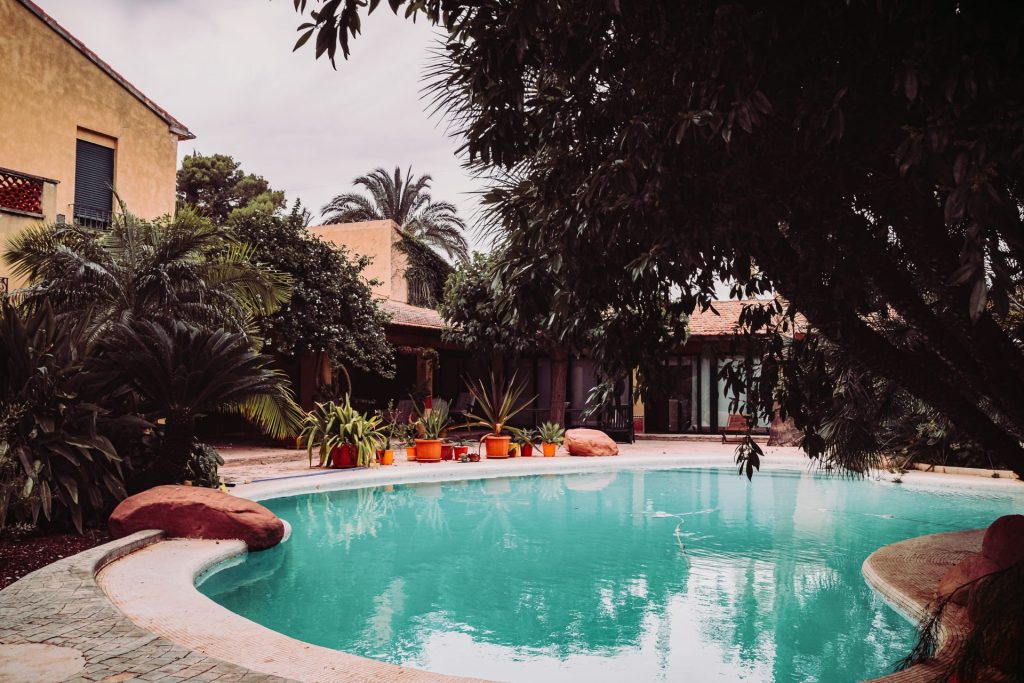
But Lewis Cha of List Sotheby’s International Realty Singapore states that Malaysia is the best country in Asia to invest in based on the Global Property Guide (GPG) ratings; next to it are Indonesia, Philippines, and Vietnam. These findings could be attributed that these areas have fewer restrictions on foreigners owning property.
You may think buying a holiday home abroad is smooth sailing, but it’s actually difficult if you don’t know anyone from the area. You may reach out to local real estate agents, holiday cottage agents, or even the local residents in your area. However, if you are planning to get an agent to assist you, make sure that they are locals in the area.
Generate Income for the Long-Term
Consider having rental income on your holiday home, especially if you’re only staying there for some parts of the year. Most prospective buyers of holiday homes make sure they get a return on their investment by renting the property out to holiday-makers through short-stay services like Airbnb. The rental income you derive from this may help you pay mortgage repayments.
However, you may also need to look into the rental income tax that might come with the property. In some countries like India, it impose a lowest tax rate of 5.8% as compared to other countries that impose a 20% to 30% tax.
According to Bjorn Fjelddahl of Odin Properties, if your holiday property is managed well, “your running costs and more can be offset by rental income.” Depending on the location of the property, your holiday cottage may only be in demand for certain times of the year. Thus, it may be difficult to find guests to stay outside of peak season.
As mentioned earlier, a good long-term investment will come in the location of your holiday home. Do extensive research on the location and invest in a good holiday house with a healthy demand from expatriate professionals and even from the local tenants. You may also consider your second property to be put up for a holiday rental as holiday rentals are most in-demand in most areas.
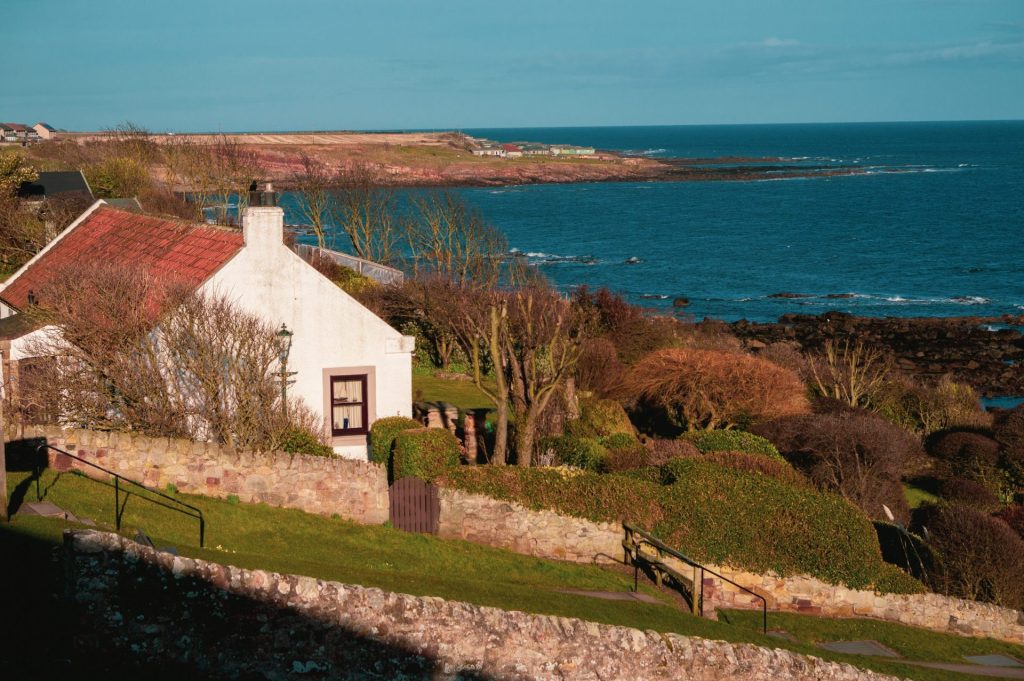
Checking the New Value of the Holiday Homes
Investors buy holiday properties on many factors: rental income and capital appreciation. Other reasons for the increase in house prices include the reputation, history, and quality of the developer.
For home buyers or investors, experts say that they need to check if the holiday home has any restrictions to foreign ownership, taxes involved, and the ease of moving funds when selling the property. In Hong Kong and Singapore, investors do not pay capital gains tax upon disposal of property, while investors in Taiwan need to pay a 35% capital gains tax, one of the world’s highest capital gains taxes.
In financing property overseas, if you’re buying a holiday home as your second property and for your personal use, a standard residential mortgage is ideal. But if you are letting out a property, you need a furnished holiday let mortgage and they are more expensive. There are providers in the property market that can help bring down mortgage costs as the demand for holiday homes becomes increasingly popular.
When estimating the renovation costs of your investment property or second home, homeowners should treat it as if it’s your primary residence. Experts strongly advise doing a thorough inspection to check for any mechanical, electrical, construction, or plumbing issues. It is also highly recommended to check any design-related matters in the kitchen and bathroom.
The repairs in your second home shall be considered in the potential property value versus the purchase price. Make sure that in renovating your holiday house, check the newspapers and search the internet for the prices before talking to a real estate agent, so you know you are paying the right price. It is also ideal to work with a reliable and reputable local architect for faster logistics management.
Safety and Security of Home
One of the considerations when purchasing a holiday home revolves around the level of maintenance required. Experts emphasize the importance of taking into account the local weather conditions, such as hurricanes or heavy snowfall, and their impact on maintaining the property.
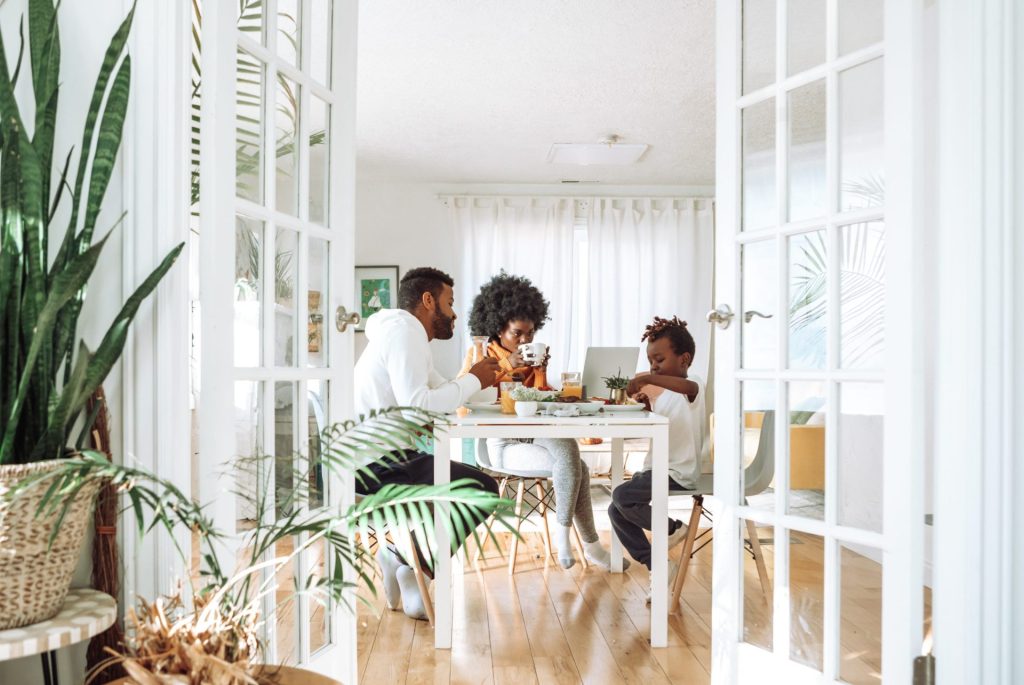
You must do your research on maintenance expenses like lawn care, pool upkeep, and snow removal, as well as the availability of housekeeping and caretaker services.
Another significant factor to bear in mind is security. One cannot assume the same level of comfort and security in their holiday home abroad as they would at home. Ensuring protection against theft and fire is paramount, and it’s vital to verify the functionality and updating of security cameras.
Personalize Your Home
Most holiday homeowners ask if can they live in their holiday homes. The answer is yes since it’s theirs to enjoy. It’s important to make your holiday house ome fit your needs.
According to Derek Lim, who works at a luxury furniture store, think about why you have the holiday home. If it’s for hosting family and friends to enjoy holidays, make sure it’s set up for that. For example, get a sofa that can be arranged in different ways, make sure there’s good lighting to make it cozy, and have a well-designed kitchen for cooking.
When you buy furniture for your holiday home, Lim recommends buying from trusted sellers, especially for things that need setup or customer support.
Discover Luxury Living with Brittany Corporation
Brittany Corporation, a prestigious luxury real estate developer with branches in Alabang, Tagaytay, Sta. Rosa, and more, can make your dream a reality. From city vibrancy to coastal serenity, we have diverse properties to match your preferences and budget. Consult with our local experts, explore holiday rental potential, and personalize your holiday home with ease. Experience peace of mind and create lasting memories.
Contact us today and embrace luxury living in paradise. You may also visit our website, YouTube, and LinkedIn for more details.
Suggested Read: Summer Vacation Homes: A Guide To finding Your Dream Luxury Property
Suggested Read: Why Invest in A Luxury Condo as a Vacation Property
Suggested Read: Pros and Cons of a Condo For Summer Vacation
Suggested Read: The Rising Growth of Holiday Homes in 2022
Suggested Read: Holiday Season: Best Time To Sell A House
A new tankless water heater installation cost is usually around Php 108,000 for a complete system. There are different types, sizes, and energy sources for tankless water heaters, such as electric tankless water heaters and gas tankless water heaters, hence the tankless water heater cost also varies greatly.
If you’re looking for an average water heater system, the cost ranges from Php 57,000 to Php 170,000. However, if you’re looking towards more high-end ones, the tankless water heater costs could go as high as Php 225,000.
What is a Tankless Water Heater?
Tankless hot water heaters have been making waves recently in modern homes. Also known as demand-type or instantaneous water heaters, tankless water heaters provide hot water only when needed; unlike a storage tank water heater, which is continuously kept warm.
A tankless water heater system is more energy efficient, which is why most homeowners are keen on having it in their homes. While it seems like something you’d want to add instantly to your next home, you must always consider its cost. Here’s everything you need to know for getting a tankless hot water heater and its installation.
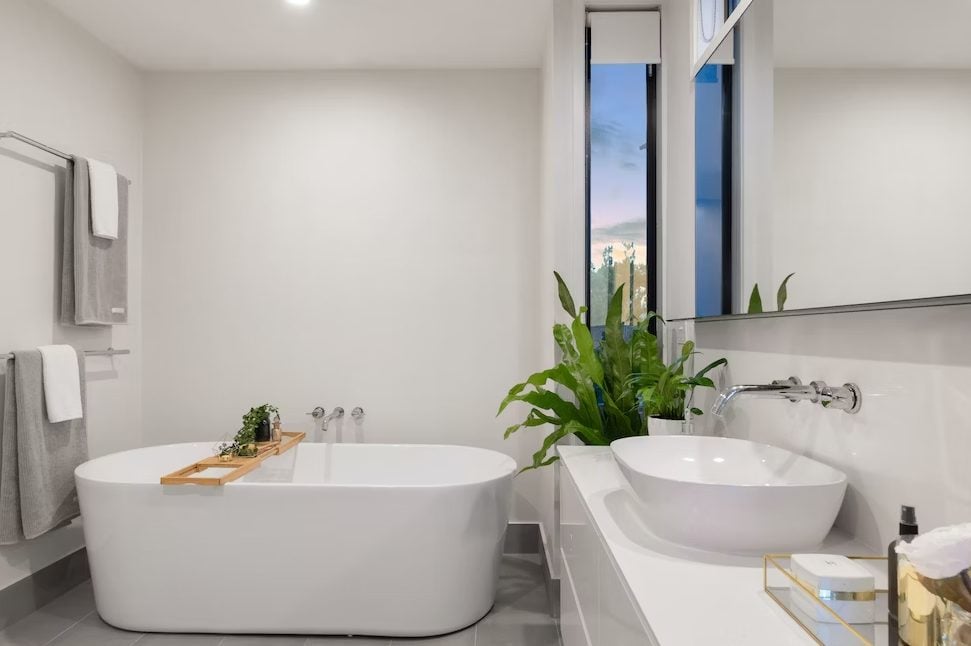
Tankless Water Heater Installation Costs
Depending on the size and type of tankless water heater system you wish to get, the price for its installation will also vary. You should also take note of the additional labor costs, as it is much safer and more efficient to hire a professional to get the job done.
The energy source for the heat exchanger is one of the factors that can determine how expensive your installation cost will be. There are three well-known energy sources for tankless water heater systems: solar, gas, and electricity.
Electric Tankless Water Heater
The cost for the installation of an electric tankless water heater ranges from Php 57,000 to Php 85,000. Being the most affordable option, electric tankless water heaters are the most common type of tankless water heaters found in households.
Electric water heaters are relatively easier to install but take more energy to generate heat – so you’ll have to leave it on for longer. However, electric water heaters do not emit harmful gases, making it safe for both you and our environment.
Gas Tankless Water Heater
The cost for the installation of a gas tankless water heater ranges from Php 74,000 to Php 102,000. As opposed to electric types, gas types heat up much faster. This makes it famous with people who want quick access to warm water in a snap without having to do any preparation.
There are different ways that you can set up your gas tankless water heaters, either by connecting to a shared gas line or by using your own source. Connecting to a municipality’s gas line can be quite a hassle, so most people opt for using their own instead, specifically, propane tankless water heaters.
Both types of gas heaters require a ventilation system, as this process emits carbon dioxide. Between the two, the gas that propane emits is cleaner only by a bit – but still emits a considerable amount of harmful gases to the environment.
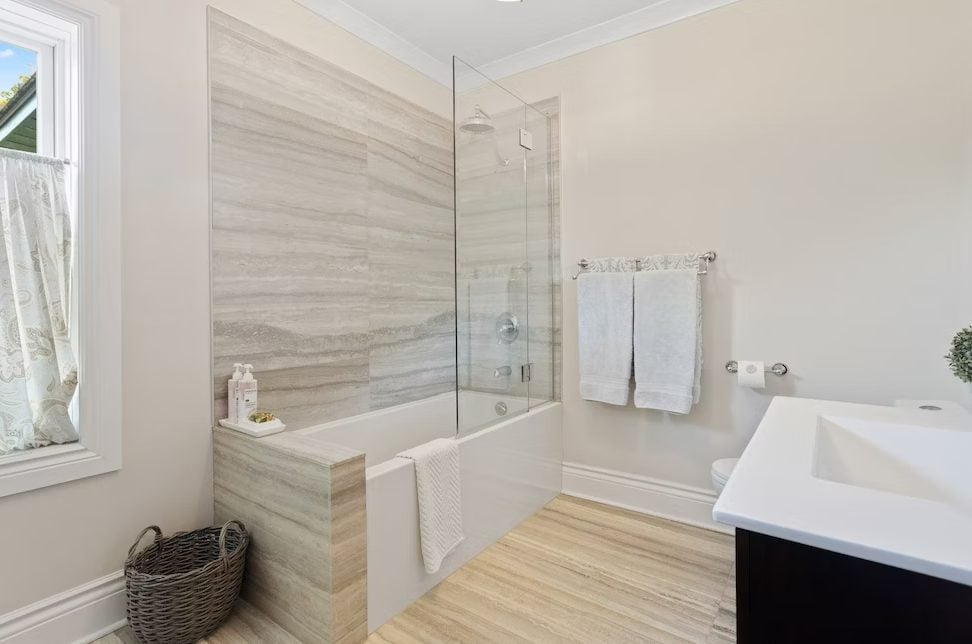
Solar Tankless Water Heater
The cost for the installation of a solar tankless water heater ranges from Php 113,000 to Php 340,000. Solar tankless water heaters are the most expensive option out of the three, but for good reason. It takes much more time and effort to install solar types of water heaters, hence the noticeable price increase.
Due to the nature of how solar energy works, there are rare instances where solar energy by itself may not be enough, so back-up sources of either gas or electric ones often come with the installation. However, solar types are eco-friendly and will also reduce your bill in the long run because of its nature as a renewable energy source.
Whole-house vs Single-Point Systems
If you’re still unsure about installing a tankless water heater system in your entire house, you can opt to install a single unit instead. A single-point system installation cost ranges from Php 5,500 to Php 11,000 only. This is significantly lower from the installation cost of whole-houses systems, which ranges from Php 57,000 to Php 170,000 as stated earlier.
You should also consider the size of your home when choosing the system for your tankless water heater. Small apartments usually only have one single-point system installed, while bigger homes have whole-house systems.
However, some homes also opt to have multiple single-point systems instead. Doing this makes it faster to generate heat, as each unit stands alone without having to rely on a bigger system. This also allows you more flexibility, especially if you want to try out a single unit first if tankless water heater systems are for you before you invest in getting them for your entire house.
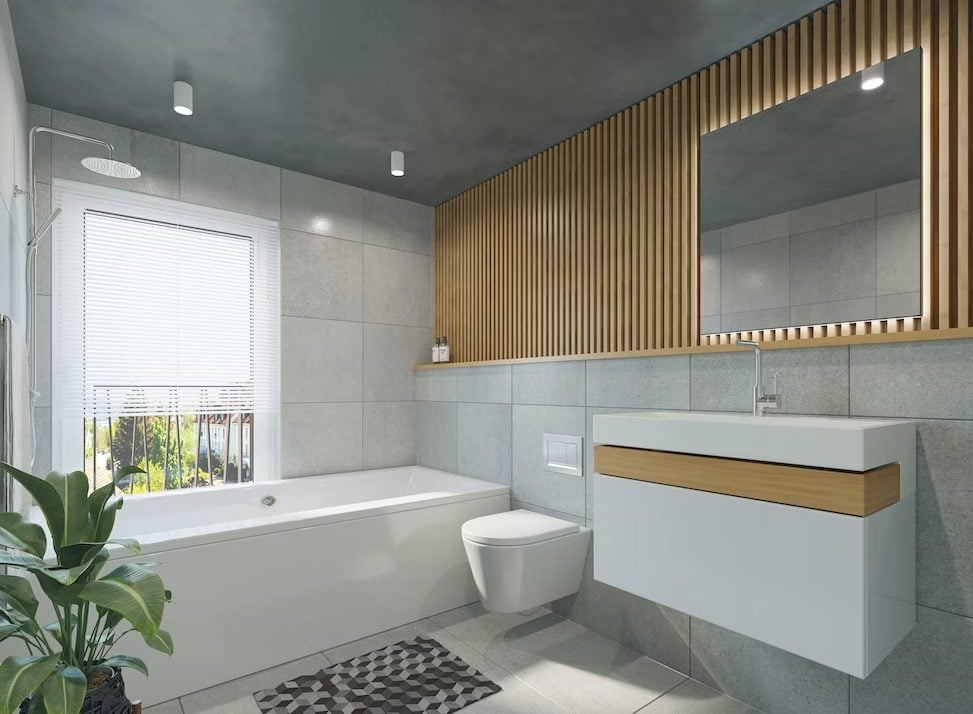
Pros and Cons of Having a Tankless Water Heater
Every system has its ups and downs, and tankless water heaters are no exception. Between costs and storage management, these heating systems have different benefits and drawbacks.
Pros:
-> Tankless water heater systems do not run out of water. They are directly connected to your main water line, removing the need to have a separate water system solely for warm water.
-> It is a space-saving water heater system, as you do not have to dedicate a large storage space for your heated water.
-> The life of a tankless water heater is much longer, lasting for as long as 20 years.
-> Energy bills become significantly smaller with tankless water heater systems, making it the cheaper option in the long run.
-> Electric and Solar Powered Tankless Water Heater Systems are more environmentally friendly.
Cons:
-> Tankless water heaters rely on an energy source. Regardless of which type it is, if the energy source run out of power, it cannot function by itself.
-> It has an expensive installation cost. Tank water heaters are much cheaper initially as compared to tankless ones.
-> Tankless water heaters also take longer to install. Especially with gas and solar types, the installation process takes a long time.
-> Repairs are harder to perform in tankless water heater systems.
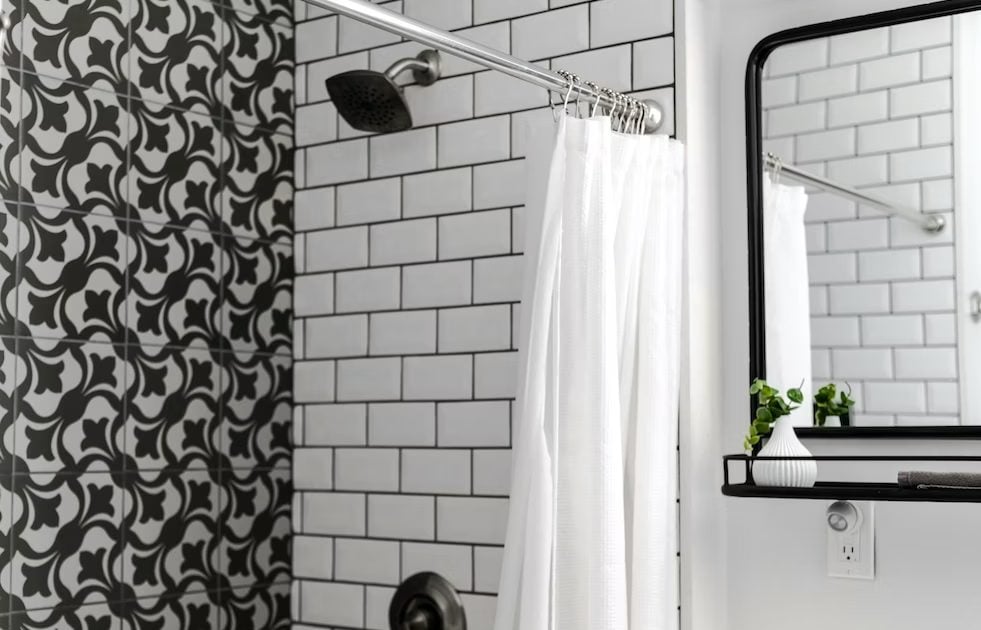
The Best Features for Your Home
Tankless water heaters are worth the investment. Having one installed in your home allows you a quick warm bath without any hassle. Aside from these, there are many other features you can personalize your home with to fit you and your family better.
The best homes start with the best base houses. Having a good foundation allows you to build a safe and happy home for you and your loved ones. If you’re looking to make a new home, you should start looking first at the best luxury homes in the Philippines, Brittany.
Brittany Homes
Brittany is a world-known luxury real estate company famous for housing the most beautiful homes in the Philippines. Found in several places in the country, Brittany excels in delivering only the best luxury homes and condominiums in all of its projects.
With model houses recipient to numerous awards both locally and internationally, quality is assured in all aspects of Brittany. Having both safety and aesthetics guaranteed, Brittany is sure to house the home you’ve been dreaming of. Worth an investment of a lifetime, choose to live a life full of class and comfort here at Brittany.
Suggested Read: Solar Panels in the Philippines: Price and Installation Process
Suggested Read: Choosing The Perfect Water Heater For Your Condo
Suggested Read: Pros & Cons of Wood, Gas, and Electric Fireplaces
Suggested Read: Water Heater Installation Cost
Suggested Read: Sustainability in Glass Houses
Painting your home’s exterior is a fun and efficient way to keep your home lively and homely. For a home with around 2,000 square feet of siding, the average exterior house painting costs approximately Php 170,000.
Depending on the type of siding and size of area to be covered, an exterior painting project can fall in the range of Php 105,000 to Php 250,000. However, if you’re planning to invest in a more high-end paint job, exterior painting costs usually start at around Php 400,000.
Exterior Painting
Exterior house painting is one of the most processes that most incoming homeowners look forward to. Being able to personalize your home in even a simple way such as choosing the color of your home can be exciting to think about.
While it may seem fun to do this paint house exterior and other places of your home by yourself, this is actually a labor-extensive job that you’d want to leave to the experts. Having the work done by professional painters will ensure that fresh coat of exterior acrylic latex paint actually stays on for a good amount of time.
Depending on the area you live in and the exterior painters you hire, their labor costs will also vary. Oftentimes, these hired painters will also be the one to provide the tools that they will be needing for the project. They are usually paid depending on the time spent working, with the average pay being Php 2,200 per hour.
For most cases, more than one contractor is hired to work on your exterior house painting project. On average, the exterior painting of a house is around Php 85 per square foot.
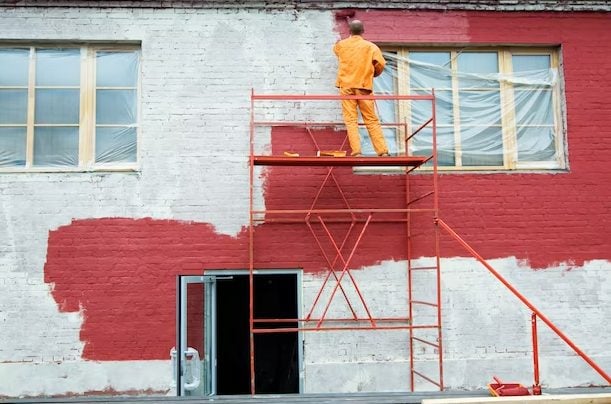
Painting Costs Based on Type of Siding
Siding is the layer you can find on top of your home’s main exterior layer. These serve to protect your exterior from various elements, such as aging and changes in the weather. While they do indeed play a vital role in protecting your home, they can affect the other factors needed to build your home – one being the exterior paint.
Different siding materials adhere to different amounts and types of paint. Your home’s siding material will be one of the main factors that will dictate the cost to paint a house exterior. Especially if your home still has old paint to be removed before applying a new one, the labor costs will definitely be affected.
Metal Siding
Metal siding is one of the most common sidings used in homes due to its easy installation yet remarkable durability and protection from various elements. However, one thing to note about metal siding is being prone to rust.
Before you start on any paint job, you must always inspect the siding for any rust. In the event that rust is found, you will have to either repair the affected area or replace it entirely. This will inevitably increase the labor costs for your exterior paint job.
For an approximate area of 2,000 square feet to be covered, the average cost to paint metal siding is Php 140,000. For other areas and difference in factors, the typical range for the cost in painting metal siding is Php 105,000 to Php 170,000.
Stucco Siding
Stucco is a mixture made up of cement, sand, and water. It is a well-known siding material due to its long-lasting reliability that can last over 50 years when properly maintained. Stucco is also resistant to a number of elements, such as mold, mildew, and rotting.
Painting over stucco can be a tedious job as there are only certain paint types which can adhere to it. It will also need to have some preparation done before you can apply paint to it and will also require multiple layers of paint in order to have a fuller look due to the crevices found in stucco.
For an approximate area of 2,000 square feet to be covered, the average cost to paint wood siding is Php 160,000. For other areas and difference in factors, the typical range for the cost in painting wood siding is Php 113,000 to Php 207,000.
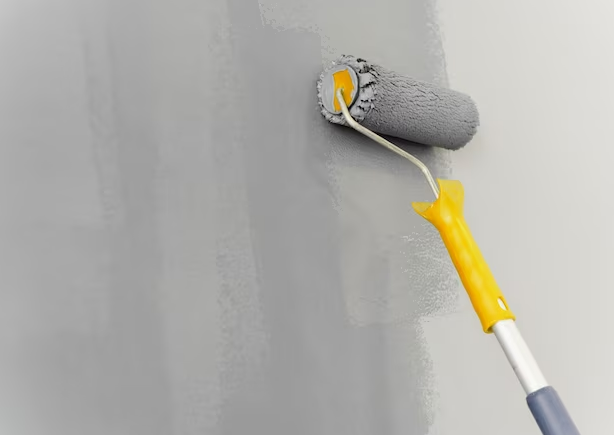
Wood Siding
One of the main reasons why people opt for wood siding is its safety for the environment. Not only is it environmentally friendly, but it also has a unique aesthetic that can be hard to replicate using the other types of materials for siding.
On the flip note, using wood as a material generally makes you quite prone to a number of things. You can’t simply paint over any holes or other damages that have formed on the wood. If it has old paint attached, you will still have to remove the old one and sand it down further. Multiple paint coats must also be done must also be done to ensure a full overall look because of wood’s rough surface.
For an approximate area of 2,000 square feet to be covered, the average cost to paint wood siding is Php 180,000. For other areas and difference in factors, the typical range for the cost in painting wood siding is Php 125,000 to Php 240,000.
Concrete and Masonry Siding
Concrete and Masonry Siding is known for its low maintenance yet still durable performance as a protector of your home. In the case of fiber cement, it is also often used in areas prone to tornadoes and hurricanes due to its resistance to moisture.
However, one of the downfalls of painting over concrete or masonry is the need to apply multiple coats of paint in order to have a good output. Prior to this, you will also have to apply a primer or sealant of some form to ensure that the color you wish to apply will truly pop out and stay that way.
For an approximate area of 2,000 square feet to be covered, the average cost to paint concrete and masonry siding is Php 190,000. For other areas and difference in factors, the typical range for the cost in painting concrete and masonry siding is Php 125,000 to Php 250,000.
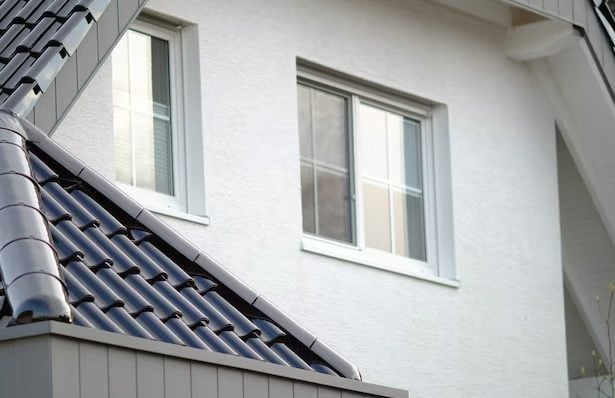
Exterior Paint Cost
For the paint itself, these are usually bought in gallons. Depending on the type of paint you get and its quality, the cost for the actual paint itself can also vary greatly. Generally, paint used for exterior house painting falls at around Php 700 per gallon while high quality ones are available for aound Php 4000 per gallon.
An average area of 2,000 square feet usually requires 12 gallons of paint. This corresponds to a total cost of approximately Php 20,000 to Php 48,000 for the average exterior paint job.
Other Factors Which Can Affect Exterior Painting Cost
Aside from simply the siding of your house, you can also opt to have other features of your home get a fresh new paint job as well. However, these features are usually priced much higher due to the difference in shape and complexity.
Here are some of the features often also included in the exterior painting project and their equivalent approximate cost:
=> Doors: Php 2,800 to Php 6,500
=> Gutters and Downspouts: Php 2,800 to Php 5,400
=> Fascia: Php 3,400 to Php 8,800
=> Shutters: Php 6,500 to Php 15,500
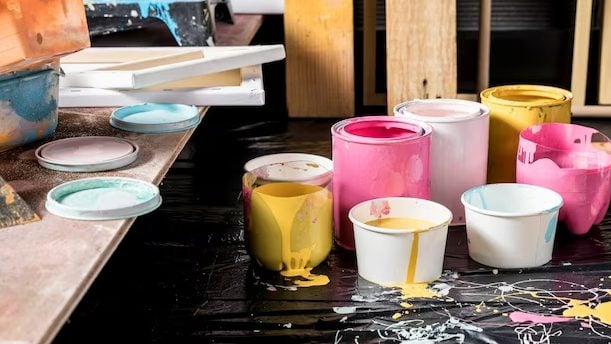
Creating a Beautiful and Strong Home
Your home is a reflection of who you are as a person. Investing in your home is one of the most important decisions in your life that you must take. From building the foundation of your home, painting the exterior, and designing the interior of your home, all of them must be done with care.
If it seems like a tedious process, you can always opt for ready-made homes. When it comes for looking the best homes made to portray both strength and beauty, nothing does it better than Brittany.
Brittany Homes
Brittany is known for its luxury homes which are the epitome of class and luxury. Providing its homeowners with only the most beautiful houses in the Philippines, Brittany has projects all over the country to satisfy you and your family.
Guaranteed to excel in both durability and aesthetics, you can’t go wrong with choosing Brittany. Find your perfect home here in the luxury homes and properties of Brittany.
Suggested Read: Spanish-Style Homes: Smart Investment in Today’s Market
Suggested Read: Exquisite Craftsmanship of Spanish Architecture
Suggested Read: Siding Installation Cost: An In-Depth Guide
Suggested Read: Cost to Paint A Room in the Philippines
Suggested Read: Vinyl Siding Installation Cost
Overtime, your home’s bathroom can become worn-out and need a remodeling job. Bathrooms are often remodeled and the cost for it usually around Php 400,000. However, the total range of bathroom remodeling costs starts from Php 114,000 to Php 850,000.
Depending on the size and materials you wish to use for your bathroom, the estimated cost will also vary. The difference between the state of your old bathroom versus the design for your new bathroom will also determine how expensive the job will be. High-end remodeling projects can go as high as Php 1,600,000.
Bathroom Remodel Cost
Just like how houses can have different models and sizes, bathrooms work the same. Based on the size of your bathroom, your bathroom remodel costs will be greatly affected. A bathroom renovation is always worth the price, especially as one of the places in your house that you’ll definitely be using often.
The cost for a bathroom remodel ranges from the stated price above of Php 114,000 to Php 850,000 for master bathrooms. Naturally, the labor costs will be higher for bigger areas and is normally measured by square foot. For smaller bathroom sizes and powder rooms, bathroom remodels only cost a much lower price of Php 57,000 to Php 455,000.
Hiring a professional contractor for your bath remodel will actually help you save money in the long run by investing in quality ang long-lasting work. Bathroom renovation costs might seem daunting at first, but seeing the improvements in both aesthetic and function of the bathroom renovations will assure you that the investment is worth it.
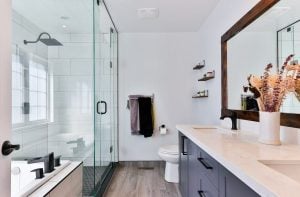
Costs for Different Bathroom Features
Depending on what features you want remodeled and installed in your bathroom, the cost will vary. Light fixtures like a simple upgrade of your bathroom walls or a shower style average cost will have a significantly lower price as compared to heavy ones like a full-on bathroom remodeling job.
Bathtub: The installation cost range for a bathtub is Php 113,000 to Php 260,000.
Cabinets: The installation cost range for cabinets are Php 170,000 to Php 340,000.
Countertops: The installation cost range for countertops are Php 113,000 to Php 284,000.
Flooring: The installation cost range for flooring is Php 85,000 to Php 255,000.
Radiant Floor Heating: The installation cost range for radiant floor heating is Php 57,000 to Php 455,000.
Lighting: The installation cost range for lighting is Php 28,000 to Php 85,000.
Shower: The installation cost range for a shower is Php 57,000 to Php 340,000.
Sink/Faucets: The installation cost range for sinks and faucets are Php 11,000 to Php 85,000.
Toilet: The installation cost range for a toilet is Php 25,000 to Php 88,000.
Fan/Ventilation: The installation cost range for a fan or ventilation is Php 11,000 to Php 28,000.
Plumbing: The installation cost range for plumbing is Php 57,000 to Php 113,000.
Cost of Bathroom Materials
The material you use for your bathroom is one of the most eye-catching elements it has. It can either make or break the aesthetics of your bathroom. You should always consider the type of materials you want to install in your bathroom.
It also serves an important role in the safety of your bathroom, especially for the wet areas of the bathroom floor. Countertops, bathroom walls, and cabinets are also affected by the material that you choose for your bathroom.
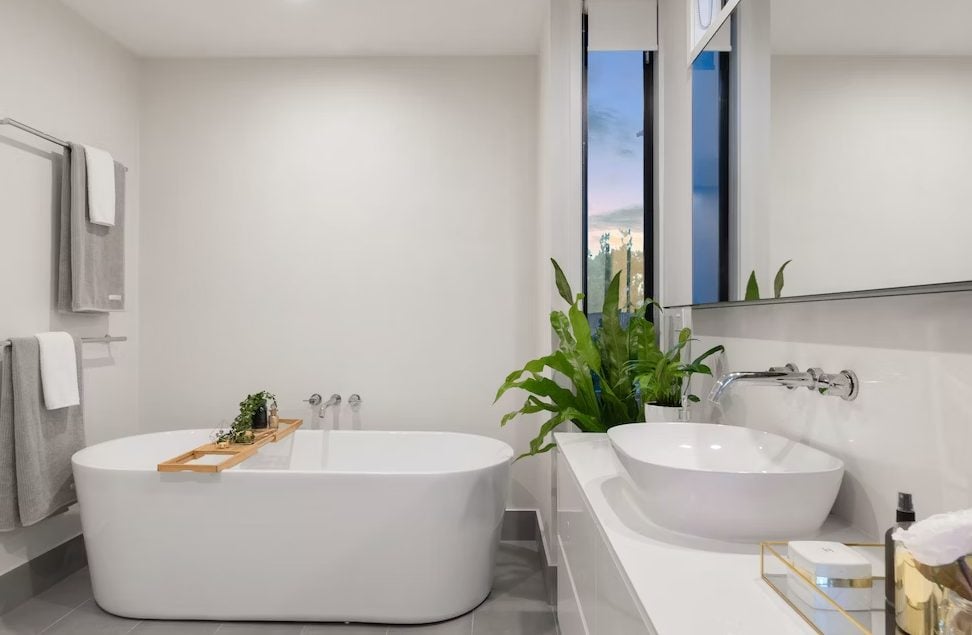
Tile
Tiles are the most common and affordable option when it comes to bathrooms. Using a floor tile has been associated with bathrooms for quite a long time now and there is absolutely nothing wrong with going with this option. If you’re on a budget and want to go for a simple design, tiles would be the best option for you.
The installation cost range for tiles is Php 1,700 to Php 4,500 per square foot.
Marble
Marble is considered a simple yet classic option for your bathroom aesthetics. Given its price it allows you a more elegant-looking design for your bathroom. Monochromatic looks for bathrooms often use marble because of its unique pattern that fits well with the theme.
The installation cost range for marble is Php 5,000 to Php 8,000 per square foot.
Quartz
Quartz is another material distinguished for its sophisticated design. Plain quartz especially gives a very clean image, making it a popular choice for bathroom design. It is considered one of the more high-end materials that you can use for your bathroom remodeling needs.
The installation cost range for quartz is Php 5,000 to Php 11,000 per square foot.
Granite
Granite is the material that almost everyone wishes to have in their bathroom. It exudes a feel of class and luxury that will make your bathroom a place of high standard. However, granite is quite expensive, so it not used that often. For those looking to invest in their bathroom aesthetics and have the budget for it, then granite is the way to go.
The installation cost range for granite is Php 5,000 to Php 14,000 per square foot.
Bathroom Remodeling Trends
Of course, your bathroom must have a theme if you wish for it to have a good look. To ensure that your design isn’t all over the place, choosing a theme to begin with will allow you to have a more unified appearance overall.
Here are some of the latest design trends famous not only in bathroom remodeling, but also for your house as a whole:
Traditional
Inspired by 18th century English and Frenc, this look pays attention to detail and focuses on antique decor and fixtures.
Transitional
Similar to traditional but uses softer palettes for a simpler and more modern look. This style often utilizes quartz.
Modern
Minimalist looks are often used for modern homes. It is a simple yet clean way to showcase your home and bathroom. It often uses monochromatic or grayscale palettes.
Contemporary
A bold modern look which incorporates sharp edges and lines. It uses strong colors and contrast to achieve a decorative style.
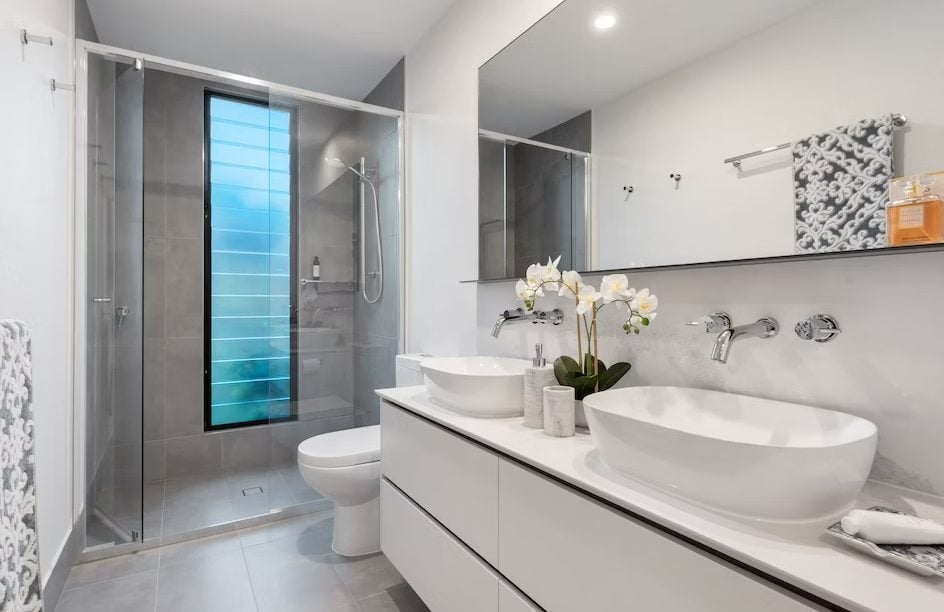
Farmhouse
This is influenced by the American homes of the 19th century. It exudes the feel of simple and homely lifestyle by using antique furniture.
Craftsman
America in the 20th century often used straight lines partnered with rich hues and wooden features for their homes. Using stained glass and having lantern-inspired fixtures were also a staple.
Industrial
Focusing more on the functional side of things, industrial styles utilize raw metals and wood to give it its unique edgy look.
Asian
One of the things Asia is known for are their remarkable spas. People who want to recreate this relaxing atmosphere do this by utilizing mood lighting and neutral tones through wood.
Beach Style
This style borrows accents from the life on the tropics. It often uses palettes with the colors blue, white, and green in order to replicate that dreamy beach feeling.
Mediterranean
Mediterranean styles often incorporated either bright white and blue color palettes similar to the beach styles yet could also use bronze and tan tones for a more traditional approach.
Choosing the Best for Your Home
Your theme is one of the most important aspects of your home. Extending even further from your bathroom, your theme will greatly determine the overall feel of your home.
Of course, creating a good home starts with the basics – the foundation of the house itself. In order to ensure that your ideal home will actually be executed well, you should get a home that meets all your expectations. When it comes to this, no one can do better than Brittany.
Brittany Homes
Brittany is known for continuously exceeding expectations of homeowners here in the Philippines. More than just a luxury real estate company, Brittany is dedicated to giving our homeowners the luxurious and comfortable lifestyle they deserve.
Home to only the most beautiful houses in the Philippines, we guarantee that your lifestyle will become a hassle-free experience by providing you with only the best homes and services in the country.
Suggested Read: Sustainable House Remodeling Techniques For Your Luxury Home
Suggested Read: Greatest Return on Investment in Home Remodeling
Suggested Read: Bathroom Remodeling Ideas For Your Luxury Home
Suggested Read: Kitchen Remodel Cost in the Philippines 2023
Suggested Read: Quartz Countertops Cost
Foundations of a home are extremely important. The average cost for installing the foundation of your home is Php 415,000. This can vary depending on the type of foundation you wish to build, the materials, the size of your home, as well as the labor costs. Overall, foundation costs usually fall in the range of Php 227,000 to Php 682,000, while those found on the more high-end projects go even beyond Php 1,137,000.
Foundation Installation
Your home’s foundation serves as the core strength of the establishment as a whole. The foundation will greatly influence how your home will turn out, as well as how long it will last against the battle with time and weathering. If you want your home to last for long, you should invest in the correct foundation suitable for your home.
There are different types of foundation available which serve their own purposes. For home foundations, concrete slabs, piers and beams, crawl spaces, and basements are the ones most used. Each one of these variations have their own conditions to be met before they should be installed, hence, thorough research and planning is required in order for you to find the right foundation type for your new home.
The foundation of a home plays a vital role in building your home. It is arguably the most important aspect, so do not take any shortcuts when planning your foundation. Hire a professional to do this work for you to ensure that your home will last for years. With years of experience, they are guaranteed to know what should be done on your home based on the conditions you live in.
Even outside planning, building the foundation itself should also be done by experienced professionals. Making the foundation of your home is a very labor-intensive and dangerous process which requires expertise.
There are many things to be done as well prior to the building process itself, such as acquiring building permits and performing inspections. Hence, it will be much easier for you to contact and work with known companies who offer these services and get the job done for you.
Types of Foundation and their Cost
As mentioned before, there are four types of foundation often used for homes – concrete slab, pier and beam, crawl space, and basements. Even from just the foundation type itself, the foundations costs will already vary.
Concrete slab foundations typically cost the cheapest, while basement foundations cost the most. Pier and beam foundations and crawl space foundations lie somewhere in between in the middle. These foundation variations have their own properties which you should consider before choosing your home’s foundation.
Concrete Slab Foundation
Concrete foundations are the most affordable foundation type available out of the four. These foundations are most often used for places with moderate climates where the soil is not prone to expansion.
This type of foundation works by the concrete material being in direct contact with the land itself, hence, places where moisture and temperature are often fluctuating could easily cause soil to expand and contract – causing a huge problem to the home’s structure.
Other than the concrete itself, these foundations are built with very short metal footings. These are extended onto the land it sits on, but more footing will greatly improve the foundation’s integrity. Rebar and stem wall foundation are often used as further support around the concrete foundation.
The average concrete foundation cost ranges from Php 70 to Php 300 per square foot. It usually costs between Php 227,000 to Php 569,000 in total for an average-sized home.
Pier and Beam Foundation
On the other hand, pier and beam foundations are the ones often used for areas prone to fluctuating moisture and temperature levels. Unlike concrete foundations, pier and beam foundations are able to raise homes slightly higher – making it flexible to soil expansion and other possible water damages from the ground moisture.
Stone or concrete piers are driven to the ground, allowing the beams made of either wood or concrete to hang horizontally. This method also creates a small empty space beneath the home built, one that is often used for plumbing or electrical needs.
Due to the hard labor costs, installation of a pier and beam foundation can be notable higher as compared to concrete foundations.
The average pier and beam foundation cost ranges from Php 230 to Php 455 per square foot. It usually costs between Php 455,000 to Php 850,000 in total for an average-sized home.
Crawl Space Foundation
If pier and beam foundations are not enough to combat the damage from ground moisture, you’re more likely to opt for a crawl space foundation instead. From the name itself, the space underneath the home is much larger than the ones from pier and beam foundations – a space big enough to crawl under.
This option is famous in places which are prone to heavy rainfall, as the house is lifted from the ground even higher. However, the large space is also vulnerable to other problems, such as mold. To prevent this, homeowners are recommended to install moisture-reducing insulation.
The average crawl space foundation cost ranges from Php 300 to Php 570 per square foot. It usually costs between Php 569,000 to Php 1,137,000 in total for an average-sized home.
Basement Foundation
With piers extended to the ground deep enough that the created space can be turned into a living area, basement foundations are the most suitable for areas which very low temperatures. Not only will it provide you with more living space, but it also makes the foundation of your home much stronger.
The cost for a full basement foundation can be daunting, however, it is proven to be a great investment with increasing value overtime. The extra living space is great for home design and extra rooms, though some also opt to have them rented out for extra profit.
The average basement foundation cost ranges from Php 300 to Php 850 per square foot. It usually costs between Php 569,000 to Php 1,706,000 in total for an average-sized home.
Building a Lifelong Home
Your home is the place you will spend most of your life with, so when it comes to building a new one, you should always place extra effort. A home that lasts long symbolizes strength not just in the house itself, but also in the people who made it.
This is why it is important to get in contact with professionals considered experts in their fields when it comes to building your home. In the case of foundations, these experts perform soil analysis and other methods to ensure the best possible foundation for your home.
Alternatively, you can also choose to buy a home which has already been built. When it comes to ready-made model houses with strong foundations, Brittany places first.
Luxury Homes by Brittany
Brittany Corporation is a certified expert when it comes to providing quality luxury homes here in the Philippines. An established luxury real estate company recognized both locally and internationally, Brittany takes pride in the luxury homes and properties it offers.
Working with professionals with years of experience, the homes in Brittany are guaranteed to last long with its brilliant planning and architecture. Using only the top-quality materials around, these homes ensure not just a safe home for you and your family, but also a beautiful and elegant one.
Suggested Read: Concrete Driveway Cost in the Philippines 2023
Suggested Read: Basement Finishing Cost in the Philippines 2023
Suggested Read: Foundation Repair Cost in the Philippines 2023
Suggested Read: Concrete Grades And Where To Use Them
Suggested Read: Concrete Cost in the Philippines 2023
